- LRV Calculator
- Sustainability
- Download Catalogue
- Resource Hub

A Rising Need for End-of-Trip Facilities (EOTF) .
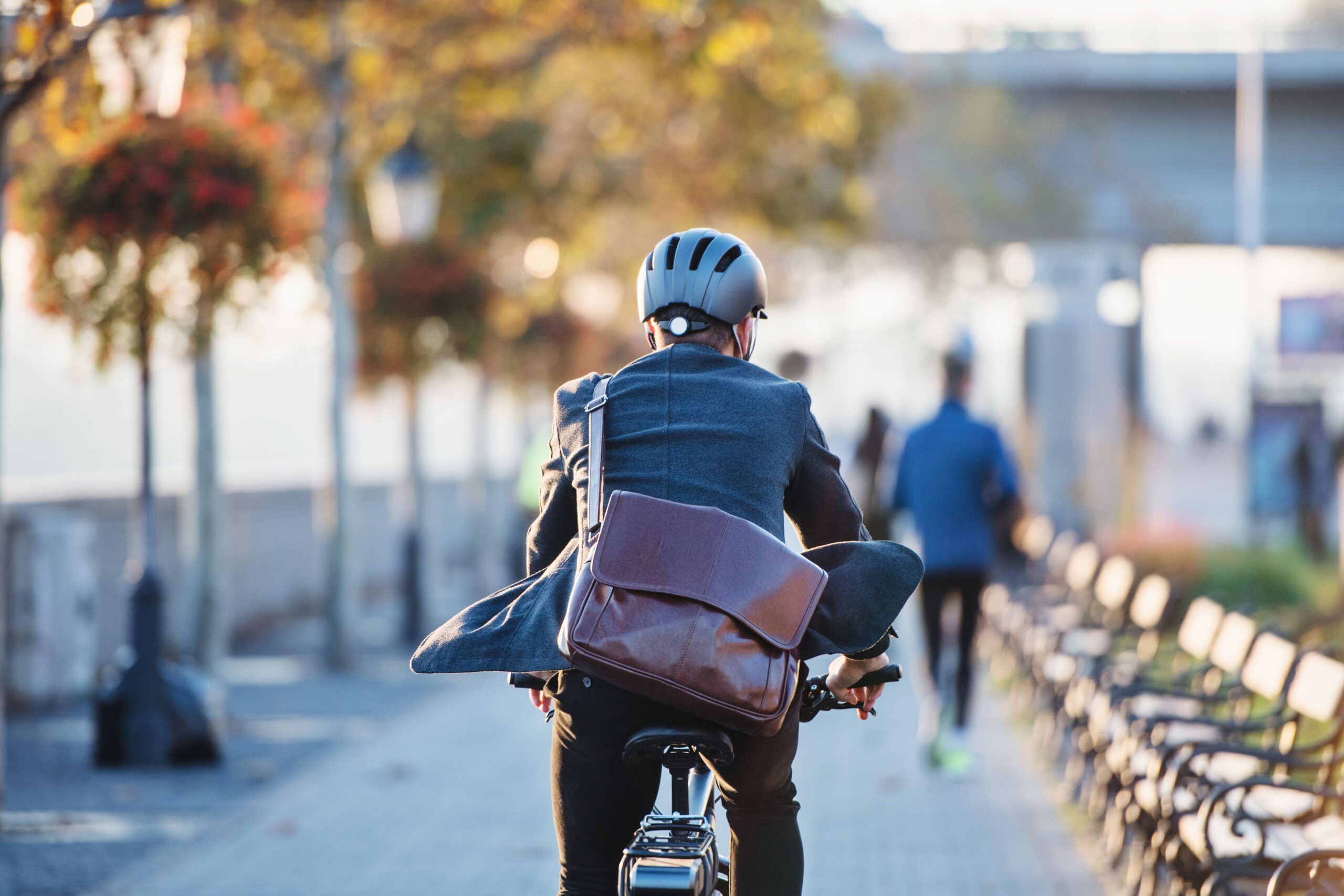
The importance of EOTF in workplaces and other properties
Designed to enhance the experience of commuters by providing convenient amenities, installing end-of-trip facilities (EOTF) in your workplace or commercial property can help them smoothly transition from their trip to their final destination.
Whether it’s cycling to and from work or going on a walk during their lunch break, end-of-trip facilities are a great way to encourage your employees to adopt a more healthy and active lifestyle. Instead of commuting via cars or public transport, you’ll also be promoting environmental sustainability by reducing your overall carbon footprint.
With dedicated bike parking and storage, you’ll also be able to minimise traffic congestion while maximising your designated car parking spaces.
What are end-of-trip facilities?
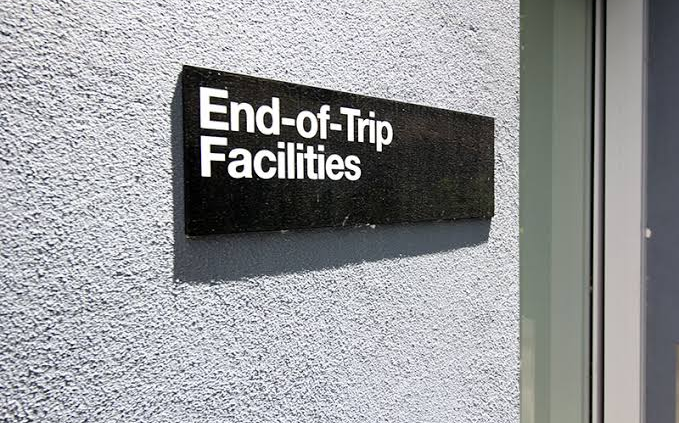
End-of-trip facilities, also commonly referred to as EOTF, are designated amenities provided at the end of a journey, typically in the context of centralised locations such as offices, commercial buildings, public transport hubs and other public areas.
These facilities are designed to provide people who cycle, jog or walk with convenient amenities for their personal needs before or after their journey.
While it may vary depending on the needs of each workplace and its commuters, EOTF often includes onsite facilities such as:
- Bike parking or storage
- Locker facilities
- Showers and changing amenities
Other EOTF can include restrooms, grooming amenities, seating and relaxation areas, drinking taps and refreshments, as well as accessibility features to accommodate those with disabilities.
Benefits of EOTF

EOTF offers a diverse range of benefits for commuters, the environment and the wider community.
These benefits can include:
- Encouraging an active and sustainable means of transportation to reduce your carbon footprint
- Enhancing your employees’ health and well-being, as well as boosting their workplace satisfaction and productivity levels
- Reducing traffic congestion and parking demand, both on-site and on the road
- Promoting your company’s corporate social responsibility values
- Improving accessibility and inclusivity for individuals with disabilities or mobility challenges
- Achieving smart urban planning and sustainability goals to counteract rising population numbers
What are the essential components of EOTF?
Typically found in workplaces, transportation hubs, and other public areas, some essential end-of-trip facilities may include:
- Bicycle parking facilities
- Secure and covered bike storage racks
- Showers and changing rooms
- Lockers and personal storage facilities
- Laundry services
- Shoe drying racks
- Water dispensers and refreshments
- Seating and relaxation areas
- Repair stations and maintenance facilities
- Onsite bike rentals or share schemes
- Charging ports for electronic devices
- CCTV surveillance and security measures
- Accessibility features
These facilities tend to vary depending on the location and purpose of the shared facility.
End of trip facilities design considerations
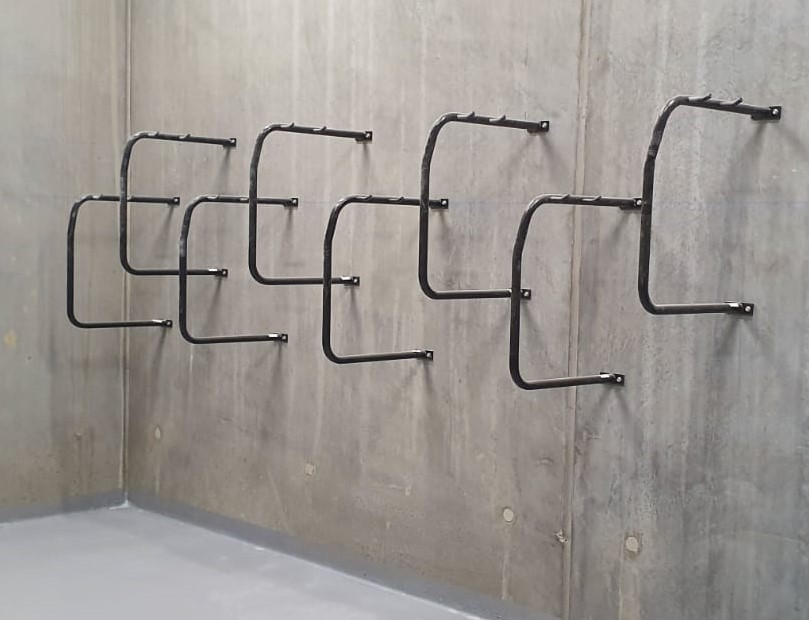
Optimised space utilisation
Often accommodating multiple amenities such as bike racks , showers, changing rooms, lockers and other facilities, you’ll want to ensure adequate space planning and layout design. This will help to keep the facilities user-friendly while promoting optimal circulation.
Accessible and convenient location
Your EOTF should be easily accessed and used by all commuters, including individuals who may have disabilities or mobility challenges. Ensuring your compliance with Australian standards and non-discriminatory guidelines, accessible features can include ramps, wide doorways, grab bars, and designated disabled parking spaces.
Enhanced security and surveillance systems
Accessible to members of the public, your end-of-trip facilities should incorporate appropriate security measures to protect commuters and their belongings. Security measures such as CCTV surveillance and access control systems are essential for deterring theft and vandalism.
Appropriate lighting and ventilation
In a shared space, appropriate lighting and ventilation are crucial to creating a safe and comfortable environment. Adequate ventilation helps to minimise unwanted odours and humidity, while proper lighting ensures safe navigation and access which can prevent the risk of slips, trips and falls.
Sustainable features
Complementing your workplace’s environmental goals, you can also incorporate sustainable design features such as green roofs or walls, rainwater harvesting, and energy-efficient lighting.
Aesthetic integration with building design
To create positive impressions and boost overall satisfaction, your end-of-trip facilities should be visually appealing and well-designed so they seamlessly complement your building’s overall design and aesthetics.
Working closely with your architects and builders to maximise functionality and aesthetics, your end-of-trip facilities should also adhere to Australian standards, building codes, and all relevant regulations and guidelines to ensure your complete compliance.
Challenges and solutions when planning EOTF
As with any project, you may need to proactively address and overcome potential challenges when planning and implementing your end-of-trip facilities.
Some common challenges may include:
- Insufficient space
- Budget constraints
- Integration with existing building and facilities
- Coordination of stakeholders and local authorities
- Maintenance and sustainability
Aside from obtaining local approvals, your EOTF should also adhere to all applicable Australian standards and guidelines. For example, when planning your bike parking and storage facilities, the AS2890.3 (2015) standard provides a set of minimum requirements for the layout, design and security of bicycle parking facilities. It also states the requirements and criteria for selecting compliant bicycle parking solutions.
Learn more about how you can incorporate compliant and safe bike parking features as part of your EOT facilities.
Examples of successful EOTF implementation
443 queen street, brisbane.

Supplying and installing bike racks for 329 bike spaces as part of their EOTF solution, Classic will be commencing work on this project in May.
To ensure complete compliance with Australian Standards, we will be installing a combination of bike rack types including horizontal and vertical wall mounts , multi-level, and hoop bike racks.
Other Classic projects that required an effective, functional and compliant solution for bike parking facilities
Mickleham distribution centre – merrifield.
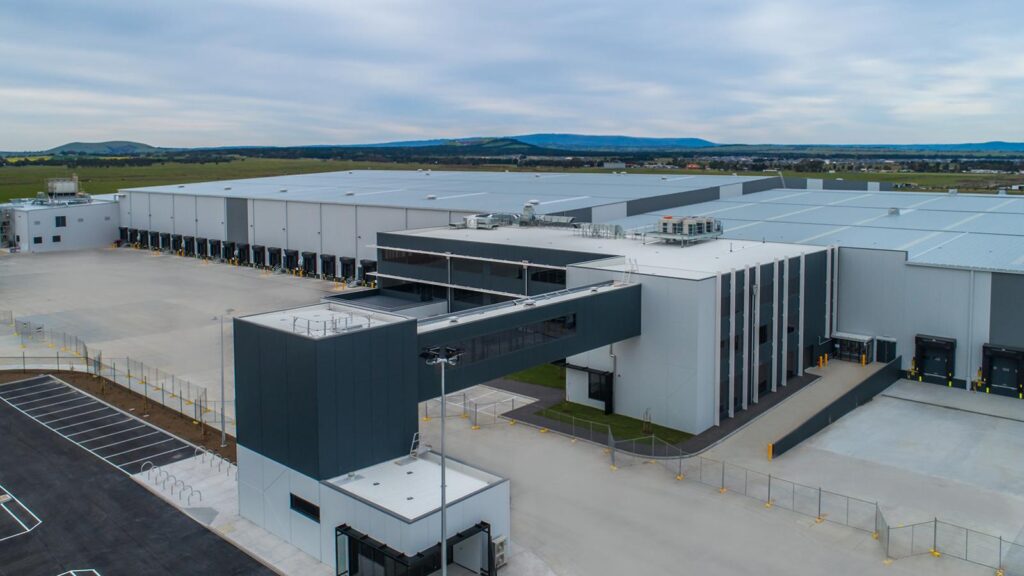
Amazon – Mel 5 – Ravenhall
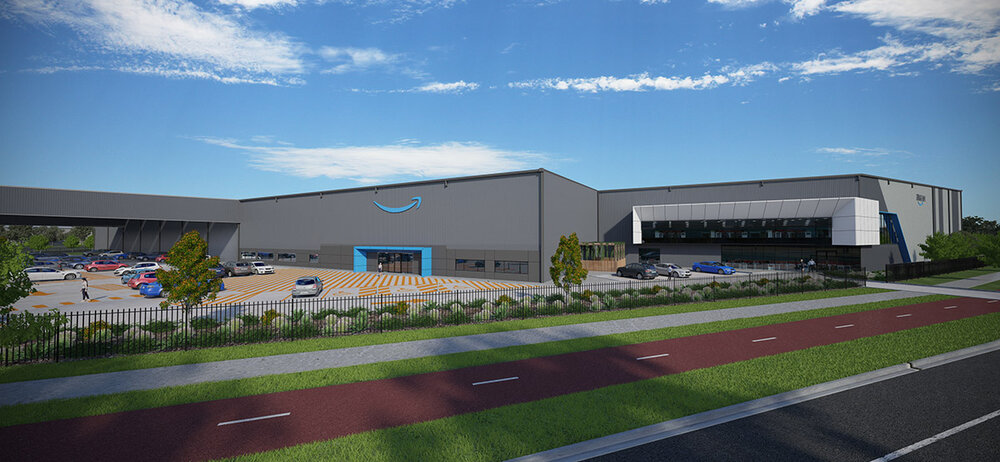
Goulburn Base Hospital
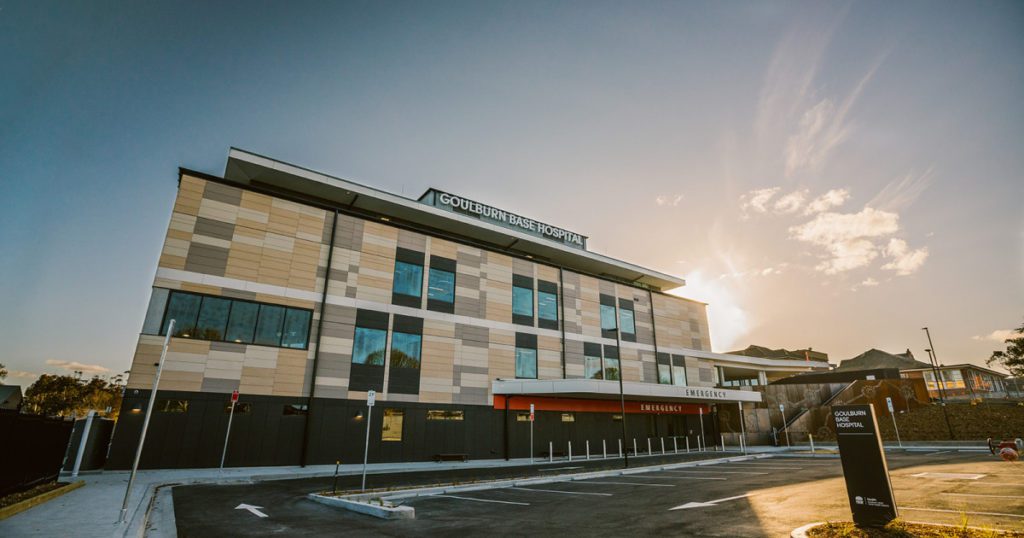
Kaufland Distribution Centre
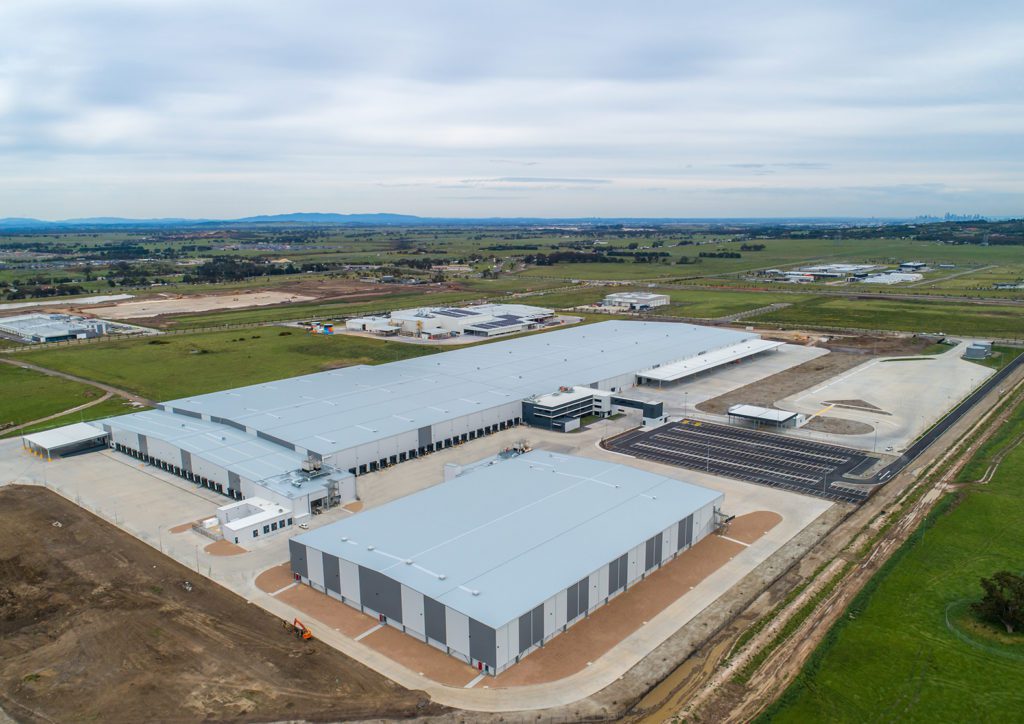
Supporting sustainable urban development, end-of-trip facilities are only just the beginning
Aligned with your company’s values, prioritising your employees’ health and well-being can help with boosting their productivity and motivation levels, which in turn can improve your bottom line. End-of-trip facilities can also increase your property’s value and marketability, maximising your long-term investment.
On a wider community and environmental level, end-of-trip facilities promote sustainable, environmentally-friendly transportation while ensuring equal access opportunities for individuals of all abilities.
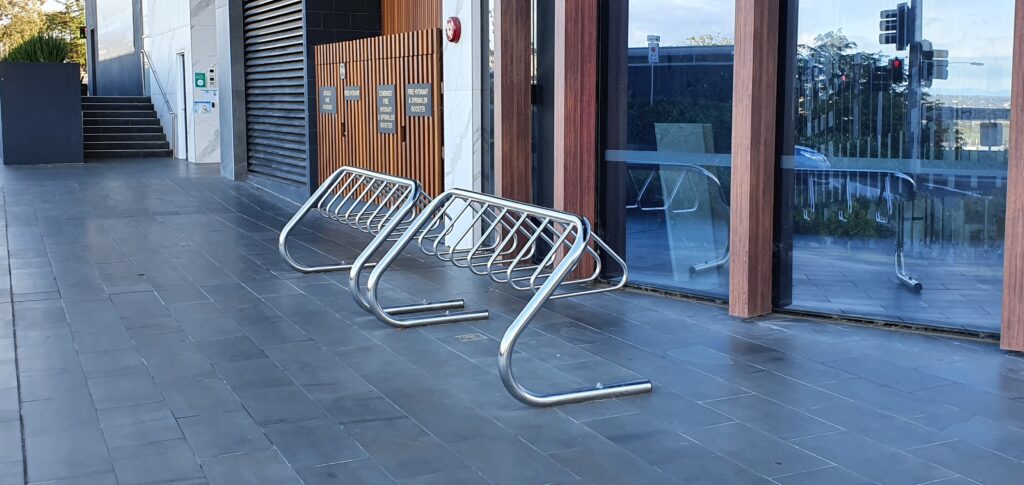
Depending on your project’s scope, Classic Architectural Group can assist with your complete floor and stair safety requirements, from stair nosings to tactile indicators , entrance matting and more. We also have expansive commercial bike racks for your EOTF and car park safety needs.
All of our access and safety solutions can be customised and architecturally designed to meet your project’s aesthetic and functional goals.
To explore our full range of bicycle racks and storage solutions, please get in touch with our friendly team of experts by calling 1300 244 377 today.
Get industry and product news delivered to your inbox monthly
- Access For All
- Safety First
- Design Everywhere
- A Compliant Environment
- Culture of Innovation
- News & Media
- Case Studies
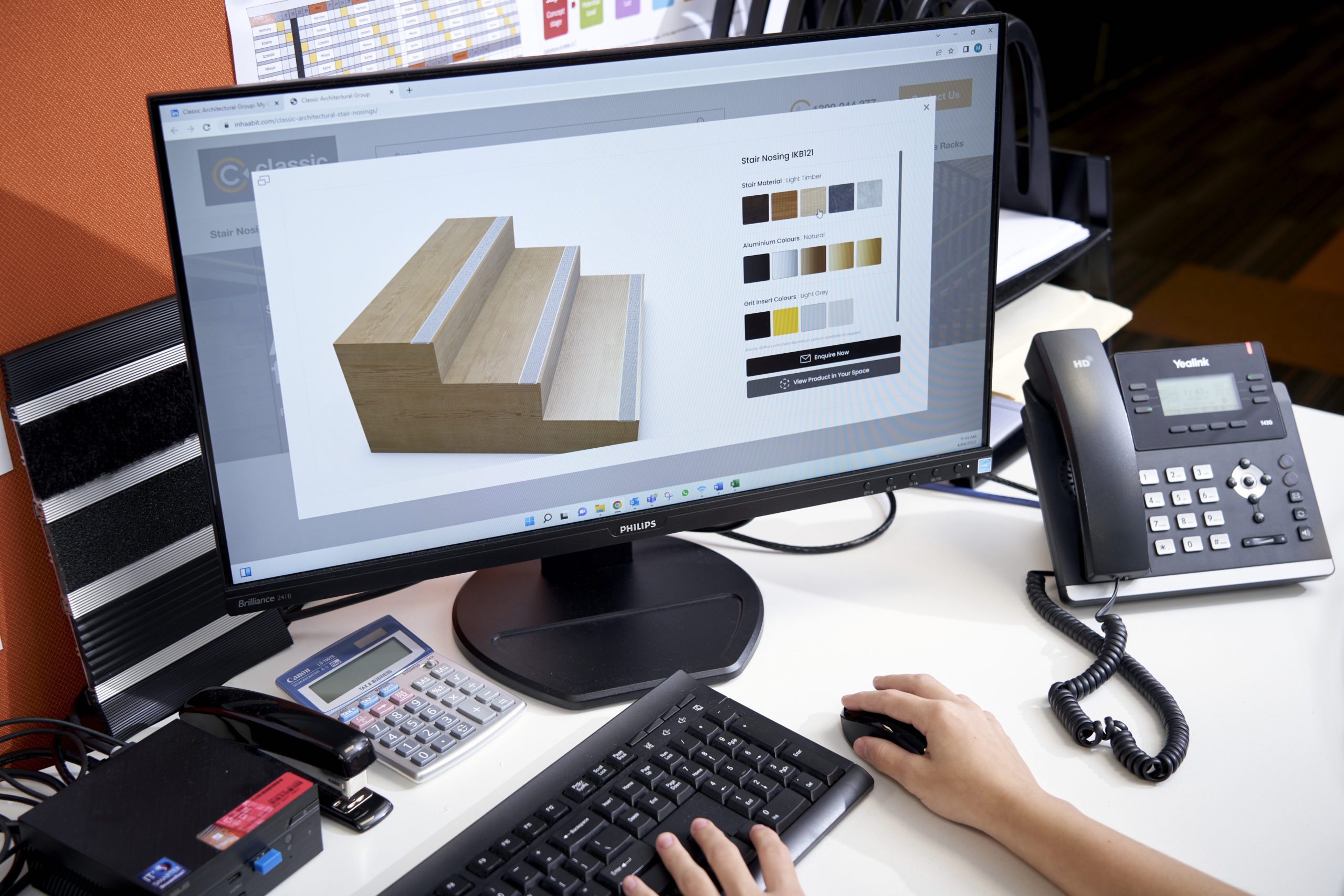
Share this :
Related articles ..

The Importance of Entrance Mats for Schools
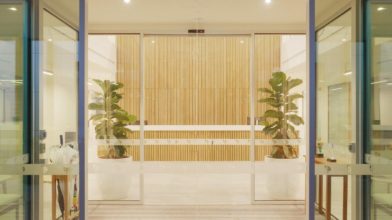
Understanding the Importance of Floor Safety
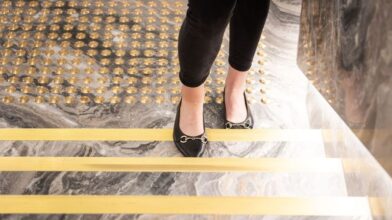
Stair Nosings to Ensure Compliance & Inclusive Access for All
Chat with our specialists about your next project ..
Call Classic Architectural Group today on 1300 244 377

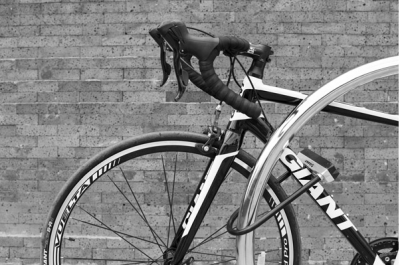
Commercial Bike Racks
View our range of bicycle parking rails, multiple bike racks, vertical wall and post mounted bike racks, 2 tier parking systems and dynamic bike racks.
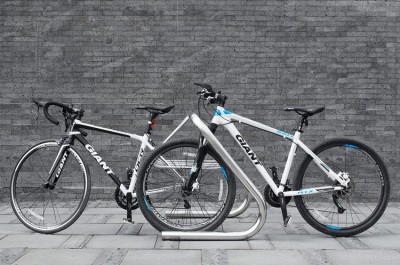
- Multiple Bike Racks
The EXPO Series is the proven solution where multiple bicycle parking spaces are required. As a proprietary Registered Design, the Expo Series has become Austaralia's most popular multi-bike rack.
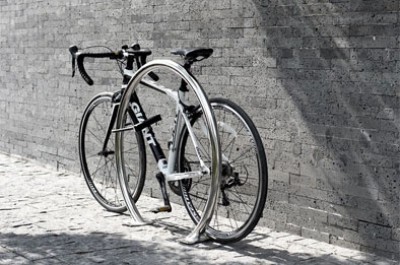
BICYCLE PARKING RAILS
The CBR Series offers a simple and effective solution that can be installed to accommodate 1‐100's of bikes in an unlimited variety of configurations and in challenging spaces.
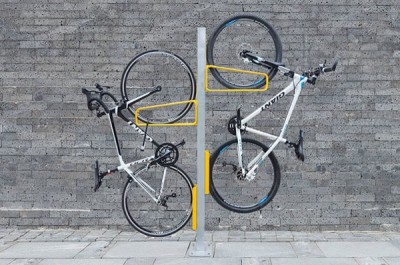
- Vertical Bike Racks
Cora's proprietary vertical bike racks can reduce the distance a bicycle extends into the floor space by 30%.
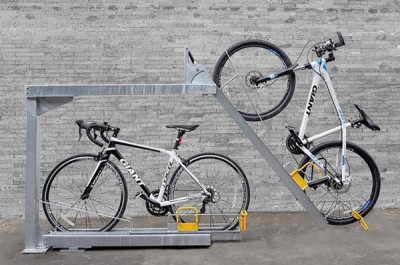
- 2 Tier Bike Racks
Where maximum capacity is critical and ceiling heights allow, Cora Bike Rack's 2 tier bike racks offer the ability to increase capacity of a bike room by over 100%.
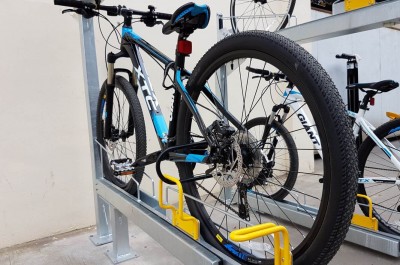
- Dynamic Bike Racks
Recognising that space is a expensive and limited resource for buildings, AS2890.3 (2015) introduced the concept of 'Dynamic' bike racks. Compliant Dynamic rack designs can increase capacity in a given space by 20%.
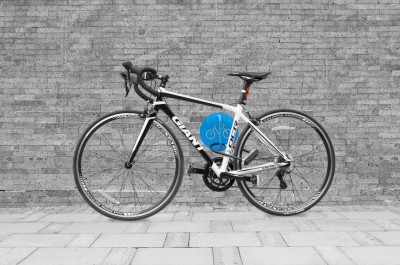
Horizontal Wall & Post
The Cora CWR Series provide a secure and compliant bicycle parking option for otherwise under utilised areas.
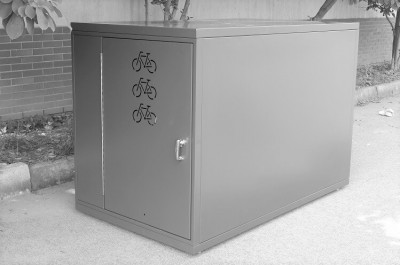
- Bike Lockers
View our range of bike lockers designed to keep bikes safe and provide cyclists with peace of mind. Models include single door, double door, vertical and 2 tier lockers.
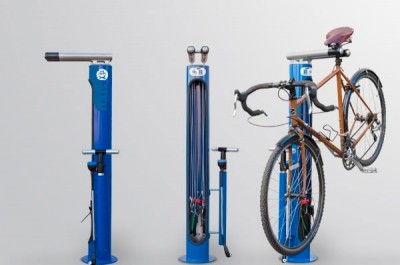
- Bike Maintenance
No end of trip facility or bike room should be without a commercial grade bicycle repair stand and tyre pump.
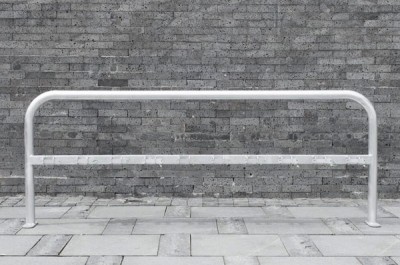
Skateboard & Scooter Racks
Primary and secondary schools, TAFE's, Universities and recreation facilities all face an increasing need to provide an organised and secure parking solution for skateboards and scooters.
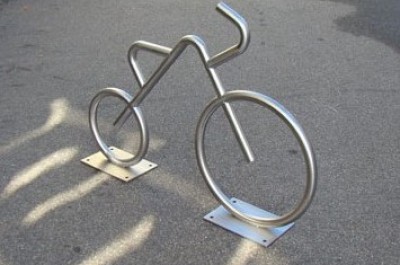
- Custom Bike Racks
Have an idea for a great bike rack? Need a business or local council logo displayed? Want to add some colour to your bike racks?
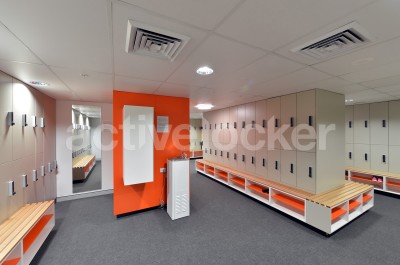
- Clothing Lockers
Complete your EOT change room facility with Australia's most secure & stylish changeroom lockers that provide cyclists the ideal place to store their riding and work clothes.
- E-Charging Racks
- Bicycle Parking Rails
- Horizontal Wall Racks
- Scooter Racks
End of Trip Facilities – the new normal
Once considered a luxury, End of trip (EOT) facilities have become an expected feature for commercial buildings.
In addition to providing secure bicycle parking systems, EOT facilities include showers, changing amenities and clothing lockers. For new buildings, EOT facilities are a standard part of the development approval and design process. For established commercial buildings, the addition of EOT facilities is seen as an essential ingredient to attract and maintain tenants.
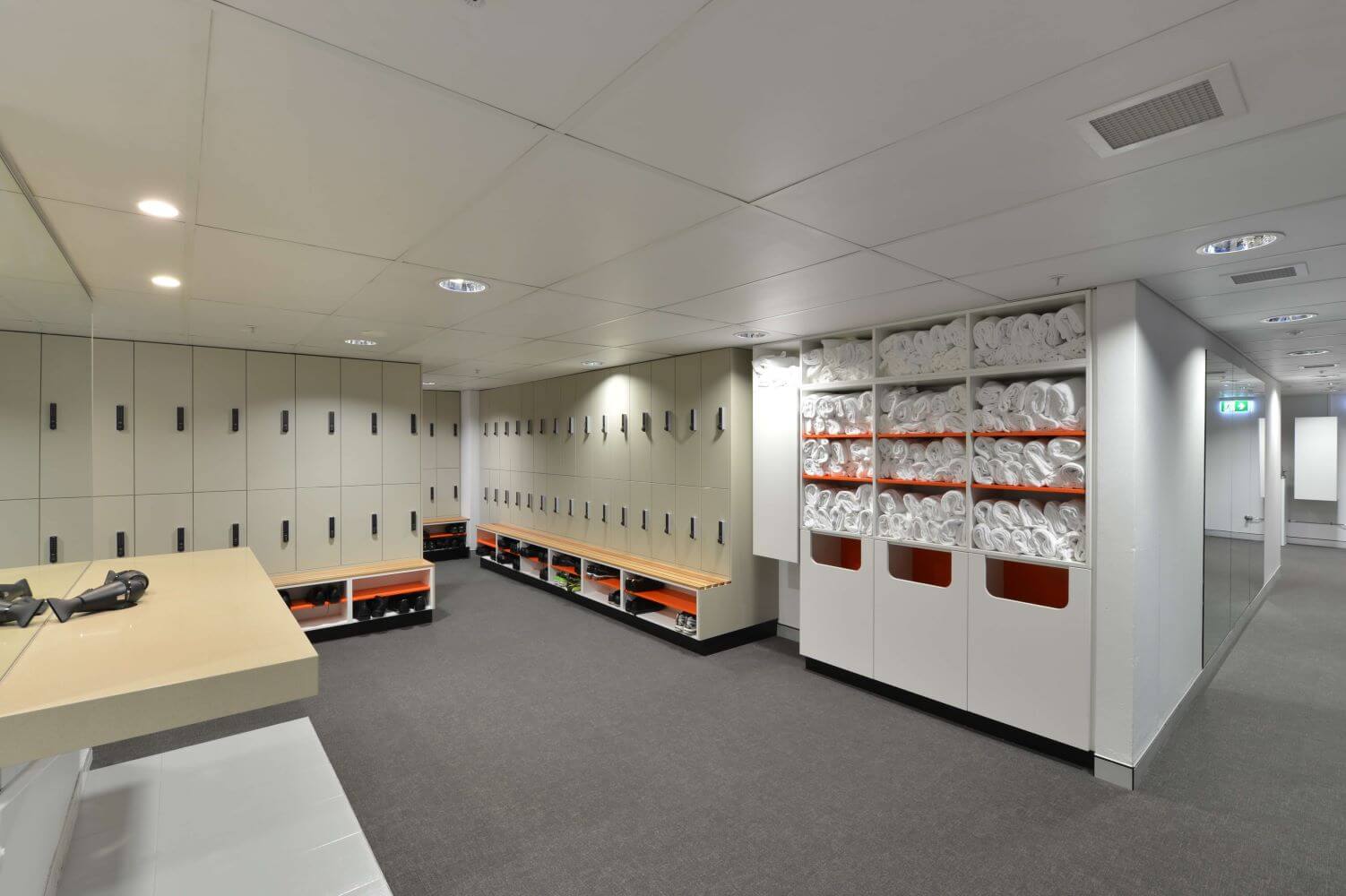
EOT facilities
According to a report from Colliers International, office tenants are demanding EOT amenities such as bike racks, showers and lockers more than ever. The Colliers report states, “Having a place for employees to store their bicycles and associated end of trip facilities is particularly important and has been considered more important than car parking for some time now.”
A growing number of CBD office properties now offer amenities that transform the workplace into a living community space where tenants can integrate their home and work lives as well as their travel time in between. Employers are looking to attract staff with better facilities and workplace environments that support better life balance and better living.
At the head of this shift towards greater staff retention through facilities is the provision of high quality EOT facilities. The design of EOT facilities must encourage bicycle use over private vehicle use. While secure bicycle parking and layout requirements are set out in AS2890.3, the design of change rooms and wet areas should be guided by functionality, accessibility and comfort.
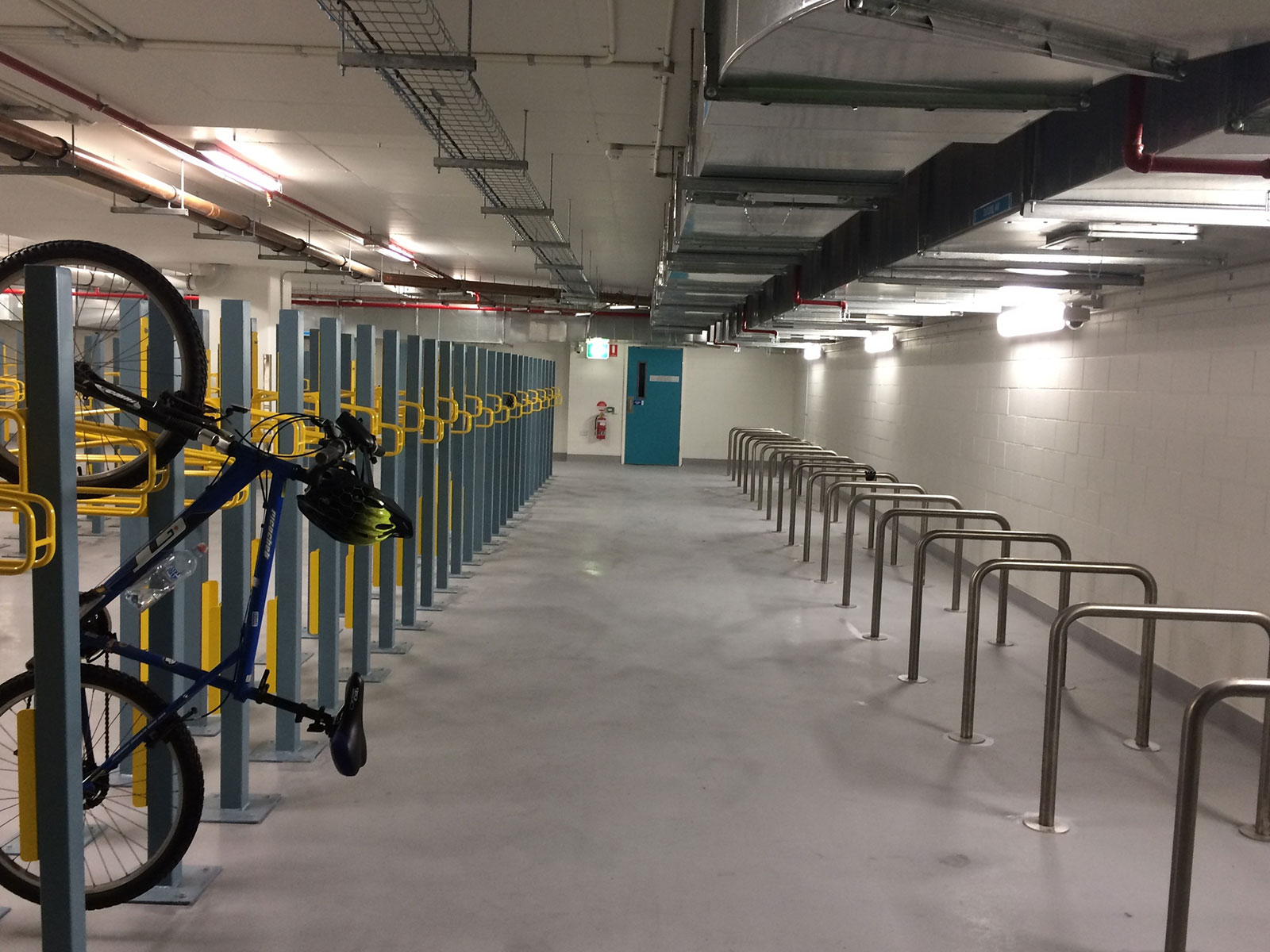
Secure bicycle parking
As a contributor to AS2890.3, Cora Bike Rack is considered the industry’s expert in EOT bike parking compliance . Together with partners at enthdegree, Cora provides a complete bike and change room design and fitout service that will provide an attractive facility and luxurious experience for all users.
Let's do Business!
Cora Bike Rack is waiting to help create your next EOT bike room
With innovative product designs, AS2890.3 experts and customer service second to none, the team at Cora will take care of your bicycle parking headaches and provide you with best-in-class bike parking and micro mobility solutions.
Leave the heavy lifting to us. In addition to providing high quality BIM/Revit content for your drawings, we can provide user friendly, space efficient and AS compliant bike room layouts for you.
Gain access to exclusive news and offers
Why End of Trip Facilities Are Essential in Commercial Buildings in 2022
- Post author By admin
- Post date 19 October 2022
- No Comments on Why End of Trip Facilities Are Essential in Commercial Buildings in 2022
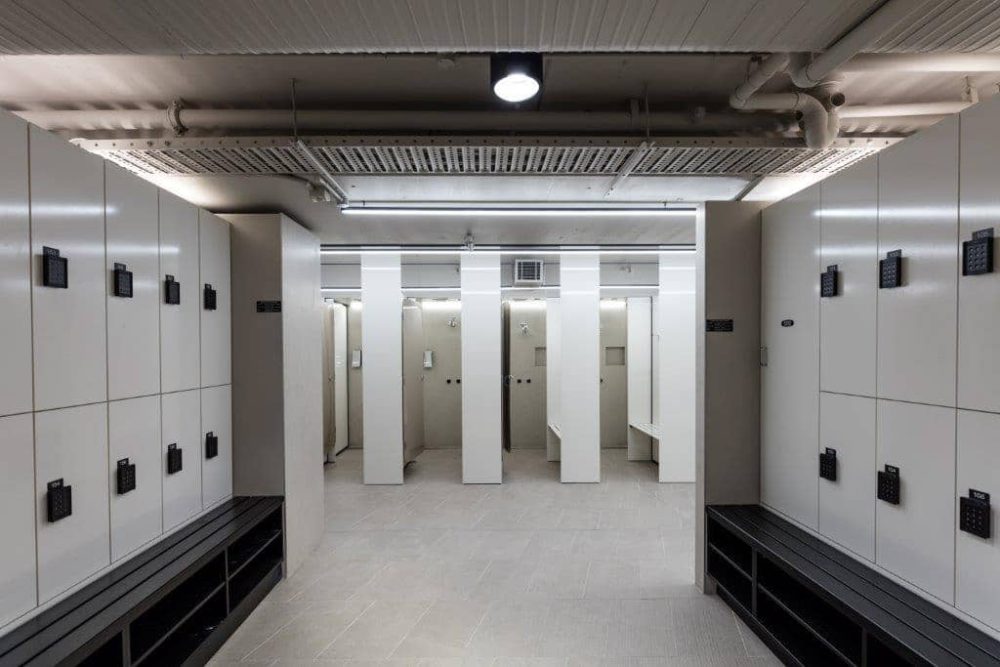
End of trip facilities are becoming increasingly common in Australian commercial buildings, with some states and territories going as far as legally mandating them. We find out what they are, who needs them and the best way to manage them.
What are end of trip facilities?
End of trip facilities (or EOTs) include changing rooms, showers, lockers and secure bicycle storage areas in a commercial building’s common area. They are designed to support people who cycle, walk or run to work or exercise during their lunch break. They’re also increasingly used by employees to freshen up after returning from a business trip or get ready for an evening function.
The benefits of end of trip facilities
Providing quality EOTs benefits individuals, businesses, building owners and the environment.
Because EOTs make it easier for people to exercise and engage in physical activity, they promote higher levels of health and wellbeing among workforces. This can, in turn, result in greater productivity and increased staff morale and retention.
Well-equipped, clean EOTs encourage people to use non-motorised transport to get to work, which is great for the environment, as well as fostering a positive corporate image. They can also increase a building’s Green Star rating and make it more attractive to prospective tenants.
What building owners need to know about end of trip facilities
Well-appointed EOTs are no longer an optional ‘nice to have’ feature in a commercial building. In competitive capital city property markets, they’re a must-have, and in some Australian states and territories, they’re now a legal requirement.
High-end buildings in the Sydney CBD have been focusing on luxe EOTs for several years now as building owners recognise the demand from corporate and government tenants. A 2015 report from Colliers International revealed the desire for EOTs was one of the major drivers of demand in Australian CBD property markets, and that appetite has only increased in recent years thanks, in part, to a COVID-inspired cycling boom.
Data from 2021 shows that cycling more than doubled across inner-city Sydney in the two years prior, and in April this year, the City of Sydney announced plans for a 250km network of strategic cycle paths across eastern Sydney. As more and more Sydney commuters choose to get to work by bike, the demand from commercial tenants for EOTs will only grow.
Meanwhile, in the ACT, recently passed legislation requires new buildings and those undergoing significant refurbishments to include EOTs by law . The new code, set to be introduced later this year, will see new commercial buildings, including takeaway food shops, funeral parlours, cinemas, and offices, required to provide EOTs. Existing buildings undergoing work affecting more than half their floor area will also be subject to the new code.
It’s a similar situation in Queensland, where the sustainable buildings development code requires all new major developments, as well as large-scale additions to existing significant buildings, to include EOTs. New developments with a floor area greater than 2,000 square metres, such as shopping centres, tertiary education facilities, commercial office buildings and hospitals, are affected. Refurbishments of existing major buildings that add 1,000 square metres or more of new floor space to the building must also provide EOTs.
How to make end of trip facility management easy with DIVVY technology
Of course, with the provision of EOTs comes the responsibility of managing them. A first-in, best-dressed approach is destined to fail – people need to know there will be a bike parking space and locker awaiting them when they arrive at the office, and they need to know their possessions are secure while they’re working.
The easiest and simplest way to manage EOTs is via a flexible booking system designed specially to manage shared assets, like DIVVY’s bookable assets system. DIVVY has taken its years of experience designing, installing and managing efficient and effective parking technology and access control systems and applied it to all bookable assets, including EOTs, meeting rooms, hot desks and shared workspaces.
Employees simply log onto the DIVVY portal and book their EOTs within the parameters set by the business. They then receive a QR code on their phone, which gives them access to the facilities they have booked. It’s that simple.
The DIVVY bookable assets system gives employees peace of mind, knowing their EOTs are booked and waiting for them when they get to work. They also know their belongings are secure because the only way the DIVVY booking system will release them is with their unique QR code.
And, of course, DIVVY’s booking system takes the burden of manual EOT management away from building management, admin and security teams. No more spreadsheets, granting and revoking access permissions from security cards, or dealing with frustrated staff who can’t access the facilities they need.
The same DIVVY booking system can be applied to office access, streamlining the process of access control, and reserving meeting rooms, turning an arduous process into an easy one and ensuring meeting rooms are used as efficiently as possible.
When applied across EOTs, office access, meeting rooms, and car parking, DIVVY technolog y creates a seamless, easy-to-use network across a business’s entire bookable assets portfolio.
To find out how DIVVY can make your business’s bookable assets work harder for you, get in touch with our sales team today.

Vivid Sydney is back from May 24th to June 15th, 2024. Experience the city’s festival of light, music, ideas, and food. Book your parking with DIVVY for easy access to all the action. Vivid Sydney is an unmissable event for photographers, art enthusiasts, and families. It is held at iconic locations including Barangaroo, Darling Harbour, […]
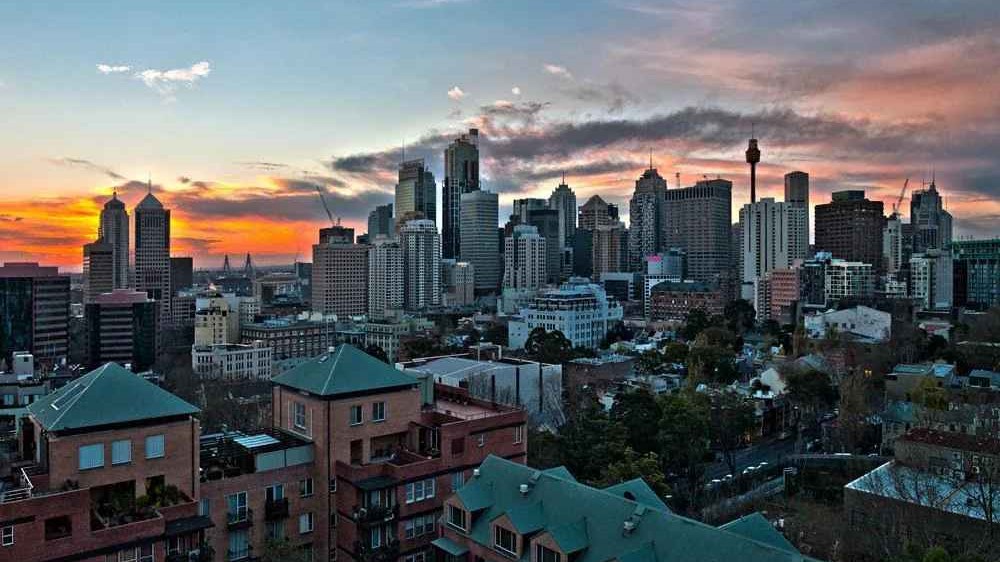
Welcome to the Sydney City’s most stylish suburb, Surry Hills. Parking is always scarce in Surry Hills because the neighbourhood is constantly crowded, whether you are going to a trendy restaurant or cafe for a bite to eat or just to work. We’ve rounded up some of the best places to eat, drink, shop, visit […]
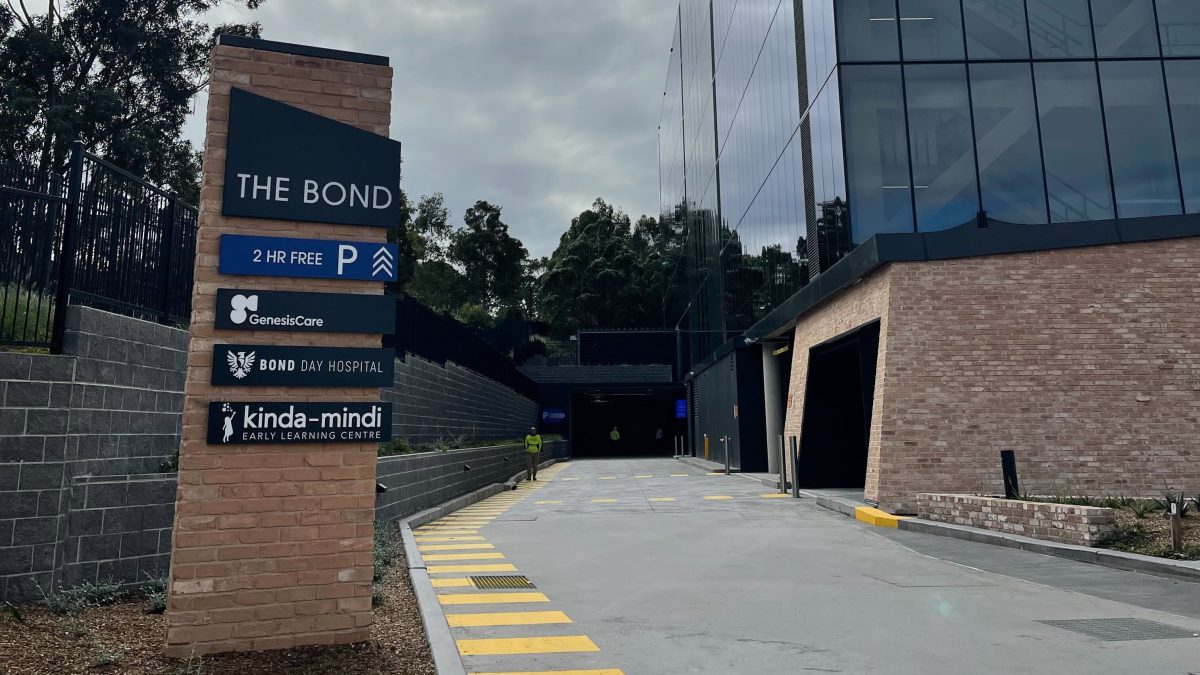
Short visits, long stays, last minute parking, or staff parking – no matter the type of hospital visit, we’ve got your Norwest Private Hospital parking covered. DIVVY has the best deals for cheap hospital parking, with two great car parks right next to Norwest Private Hospital in Bella Vista. Norwest Private Hospital parking at 18 […]
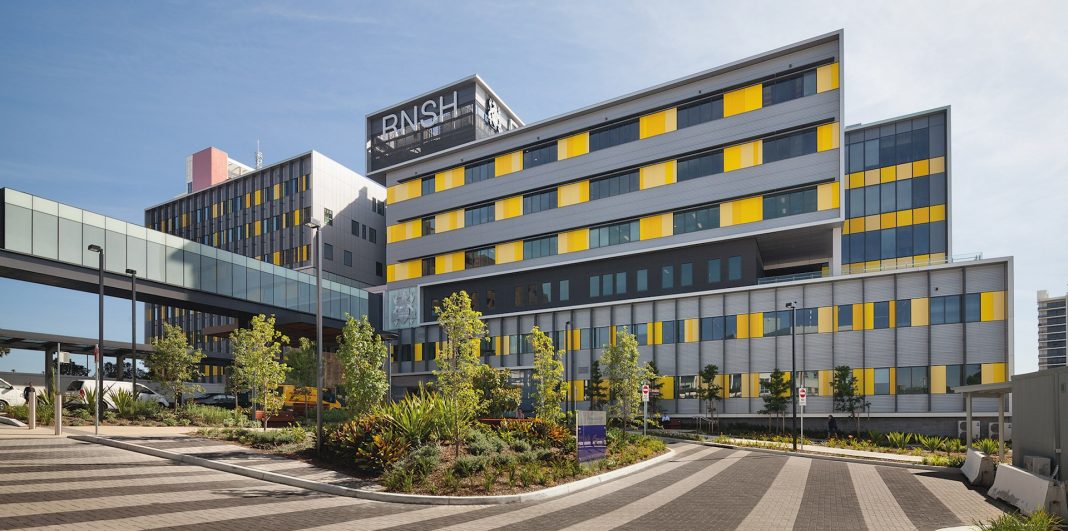
Whether you’re a patient, visitor, carer, or staff member, parking near Royal North Shore Hospital in St Leonards can be costly and hard to come by. DIVVY makes hospital parking easy with two cheap parking options less than 5 minutes’ walk from Royal North Shore Hospital. Royal North Shore Hospital parking at 207 Pacific Highway, […]
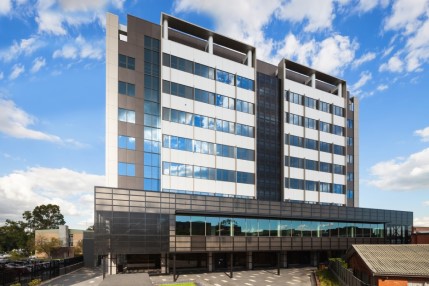
When Sandran Property Group needed a smart, streamlined building access system tailored to meet the needs of their security-conscious blue chip tenant, they approached DIVVY for a solution. Client: Sandran Property Group Property: 121-125 Henry Street, Penrith, NSW Sandran Property Group owns 121-125 Henry Street, an A-grade commercial office building in the heart of Penrith’s […]
You are using an outdated browser. Please upgrade your browser to improve your experience.

Get the Magazine

Cameron & Co expertly transforms a Brisbane office tower’s subterranean parking lot into a spiffy wellness zone to promote workday exercise.
Over the past few years, employee health and well-being have become firmly established as leading design considerations for workspaces. Human-focused and biophilic elements, including access to sunlight as well as patterns and shapes that mimic those found in nature, are now a common sight in offices. Add to that a growing trend in Australia that sees EOT (end-of-trip) facilities — shared bathroom spaces that encourage and support employees who bike, walk or jog to work in the mornings and those who get physical on their lunch break — popping up in office buildings big and small.
Case in point: As part of a recent office-tower lobby and café redesign in Brisbane, Stephen Cameron, principal at local architecture firm Cameron & Co , reassigned a portion of the underground parking lot to a 700-square-metre employee-devoted functional area that adroitly blends the raw with the refined.
Upon entering — via either a dedicated street entrance or the car-park elevator lobby — those looking to freshen up are greeted by a lounge area clad in spotted gum (an Australian hardwood) and equipped with brass-lined shelving offering fresh towels. A living wall adds greenery and softens the transition into the low-ceilinged basement. Overhead beams and service pipes were left exposed to exaggerate its height and painted olive green to lend visual texture. As the existing concrete floor was too uneven to be workable, Cameron topped it with a self-levelling Ardex compound that closely matches the concrete in colour and texture.
The architect then introduced a number of durable yet beautiful materials throughout the purposefully high-traffic zone, which is divided into separate male and female shower and change rooms (each able to handle up to 13 people at a time), a universally accessible bathroom and a locker room.

Inax Ceravio G ceramic tiles (a series of flat linear ceramic tiles with varied profiles) cover walls, shower stalls and the vanity in the women’s bathroom; a durable laminate that mimics the lounge’s natural hardwood fronts the lockers and Corian’s terrazzo-look Everest surfacing makes up countertops and the bench seating in the locker room. Matte black fixtures, brass accents (including sconces by Melbourne’s Dowel Jones repurposed as unexpectedly elegant ceiling lights) and frosted-glass mirrors inject polish to the subterranean space.

“Combining rough and raw structural elements with exotic and refined details is a signature approach of ours,” says Cameron. “We love the brutal honesty of an exposed structure combined with the delicacy and beauty of highly crafted items.” Here, that trademark move has resulted in a linger-worthy destination that any employee would be happy to see each morning.
- ArchifySpec
- Professionals
- Inspiration
- For Professionals
No Result Found
Can’t find what you’re looking for? Let Archify source products for you for free! Submit Request
- Sign Up for Free
Login | Sign Up
Notification
Select Country
- Accreditations
Collections
Get in Touch
Additional Request
Brochure/Catalogue
Price/quote, accreditation, drawing files, request a sample, product lead time.
Type of Meeting
Face to Face
Day of Week
By clicking send message you agree to our Terms of Use and Privacy Policy
Confirm Submission
Are you sure want to adding all Products to your Library?
Contact Detail
Phone Number
What are End-of-Trip Facilities & are they important?
02 May 2023 by Classic Architectural Group
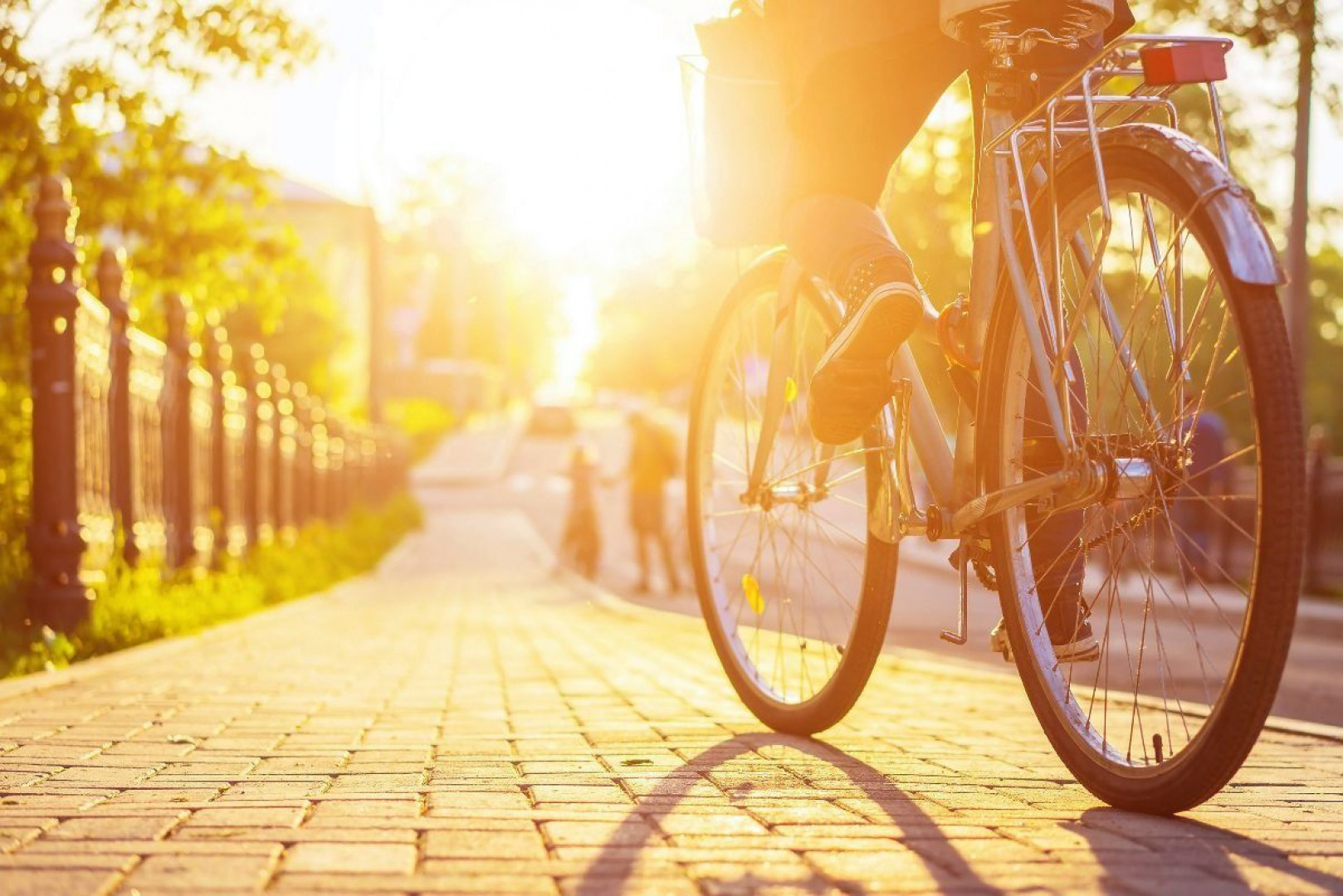
The Importance of End-of-Trip Facilities in Workplaces & Other Properties
Providing commuters with convenient amenities at the start or "end of (their) trip" can provide a huge range of benefits not only for your employees but also for the wider community and our environment.
From encouraging healthier, more active lifestyles while reducing our carbon footprint, end-of-trip facilities (EOTF) can also increase your property's value and marketability, maximising your long-term investment.
Read our latest blog to learn more about the rising importance of end-of-trip facilities, key design considerations and potential challenges to be aware of.
LEARN MORE ABOUT END-OF-TRIP FACILITIES

Share Your Plans for a Quick & Easy Online Quote
Prioritising your speedy convenience, did you know that you can request a quote online?
To get started, simply:
- Fill out this online form
- Attach any relevant plans
- Hit 'Send Enquiry' - and you're done!
Whether it's innovative bike rack options for your EOTF or a complete floor and safety solution for an upcoming development, our friendly experts will help you get moving on your project ASAP.
GET STARTED TODAY

Image Credit: Architectus
Project Feature // 443 Queen Street, Brisbane
Queensland's first truly subtropical apartment tower, 443 Queen St is now well underway with expected completion later this year.
Creating a strong link between city streets and the river edge, the building will feature sprawling public walkways, gathering places, viewing spaces, and active spaces.
Supplying and installing bike racks for 329 bike spaces as part of their EOTF solution, Classic will be commencing work on this project next month. To ensure complete compliance with Australian Standards, we will be installing a combination of bike rack types including horizontal and vertical wall mounts, multi-level, and hoop bike racks.
BENEFITS OF FUNCTIONAL BIKE RACK FACILITIES

Send Message

- Privacy Policy / ToU
- Mobile Apps
- Project Showcase
- Event Terms & Conditions
- For Suppliers

Can't find what you're looking for?
Let Archify source products for you for free
Submit Request
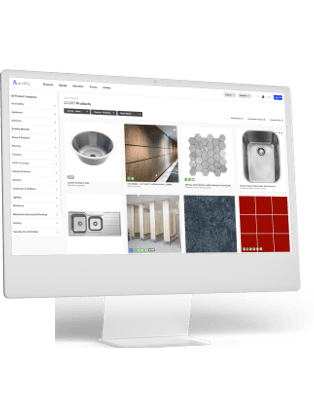
Let Archify source products for you for free !
Create Board
Save Company
This Product Supplier profile is being prepared
Copyright © 2024 Powered by BCI Media Group Pty Ltd
Enter to Preview
Share this Supplier
Send Message to this Supplier
Add All Products to My Library
Send Meeting Request to this Supplier
Add image to board
Choose Design Folder
Create Design Folder
Get the latest design news direct to your inbox!

- Your Moment Indesign
How to design end of trip facilities with sustainability in mind
End of trip facilities are becoming an important part of modern office design, but CSM know that sustainability must go hand in hand with this development.

BY Andrew McDonald
December 1st, 2018
csm-office.com.au
Tags: csm , CSM Office , csm-office-furniture , end of trip , mirvac , north sydney
Co-owned by Mirvac Group, 101 Miller St North Sydney needed an upgrade and like so many office projects today, end of trip facilities were an essential inclusion for the build. Ideas of sustainable design were key drivers for the building, taking a holistic approach to the reduction of greenhouse gas emissions.
This iconic building now represents an award-winning retro-green design, capable of functioning for years to come while avoiding expensive excessive energy inputs or substantial demolition waste generation.
The design, management and construction of 101 Miller Street’s new End of Trip amenities were entrusted to Enfold. The result is an outstanding contemporary facility for the end users of the building, with storage for over 170 bicycles, refurbished bathrooms, showers and nearby staff lockers – supplied by CSM Office Furniture Solutions and includes METRA locking systems, a stylish and secure end of use service for employees.
Through touchscreen technology, employees can access the three areas of bike rack, and male and female changing areas, while the card readers have been locked to the individual’s own access card to ensure security. Locker reservations last throughout the day but automatically expire overnight, allowing for varied use reflecting the hot desk design of so many modern workplaces. CSM have always championed sustainability in their locker and design work. In acknowledgement of CSM complying with the Voluntary Environmental Declaration Standard for Furniture and Fittings, GECA has awarded CSM with the Good Environmental Choice Label.

This international best practice environmental declaration means that CSM products deliver better environmental outcomes – throughout their entire life cycle. This sets CSM apart as an established innovator in environmental standards.
”Following investigation and visits to the various end of trip facilities it became obvious that the simple convenience of using one building access card was not generally available,” says Ray Marsh of Mirvac” As simple as it sounds, one access card for all available building services from the car park, building entries, lifts and available for tenancies was a must.
“Tenants have the ability to reduce the number of tenancy and building services cards from three to one. CSM and METRA Australia listened to what we believed to be achievable and provided a system capable of providing exactly what we wanted to achieve. “
INDESIGN is on instagram
Follow @indesignlive

The Indesign Collection
A searchable and comprehensive guide for specifying leading products and their suppliers

Ross GardamStylecraft

Thomas Collection
Indesign our partners.
Keep up to date with the latest and greatest from our industry BFF's!

The architecture of water
hansgrohe’s Tecturis celebrates daily water routines.

This Italian furniture company are the masters of wooden craftsmanship
Discover the manifestation of century-old techniques realised with modern technologies

Convenience, connection, creativity: Bosch’s AI-powered Series 8 Ovens herald a new era of cooking
Bosch is ushering in a new era of culinary innovation with its AI-powered Series 8 Ovens. Here, Bosch’s Head of Product Design shares how they’re transforming the kitchen experience.

Poetry, essentialism and freedom in kitchen design: Sven Baacke introduces Gaggenau’s new cooktop
Gaggenau’s new Essential Induction is set to transform how we design and use our kitchens. Here, the brand’s Head of Design lets us in on the creative process behind the groundbreaking innovation – and reaching the poetic intersection of form and function.
Indesign Newsletter
Are you a design professional or enthusiast? Sign up to our newsletter to get the latest stories.
Related Stories

A landmark for gastronomy and design aficionados alike
Walker Street Precinct, designed as a collaboration between Cox Architecture, H&E Architects and Etymon Projects, is a project to satiate your urban palette and palate.

Past and future at Maitland Administration Centre
Maitland Administration Centre is rooted in principles of accessibility and community in the workplace.

Back to basics at Zero Gipps: First-principles sustainability with SJB and Verosol
Beau Fulwood and Alison Peach on returning to a low-tech, first-principles concept of design as a strategy to combat climate change.

The full speaker lineup for the 2023 INDE.Summit is here!
Discover who you’ll be hearing from at the region’s leading architecture and design symposium.
While you were sleeping
The internet never sleeps! Here's the stuff you might have missed

Calling all students: the Eussen Design Competition is back and this year the brief is all about creating a visual exhibition
Students can put their name up in lights with this competition that awards burgeoning creativity.

Sitting down for dinner with Peter Goetz at Gaggenau Sydney
Gaggenau’s Managing Director was recently in Australia, where we had the pleasure of hosting an exclusive dinner at their Sydney showroom.

Retailing at its best
The Studio 19 Experience Centre in Bangalore, India is changing the face of retail in the city and indeed the country – and it’s all thanks to Gensler.

Fiction of Space
Marquetry, art and mirror are the subject of Fiction of Space, an exhibition in Melbourne that explores the ideas of space and place in the modern world.
Subscribe to our Newsletters
Enjoy the latest products and projects from around the Asia Pacific region, sent directly to your inbox.
- Testimonials
- Office Fitout FAQs
- Building and Design Assessment
- Fitout Interior Design
- Commercial Office Fitouts
- Speculative Fitouts
- Medical Fitouts
- Allied Health Fitouts
- Industrial Fitouts
- End of Trip Facilities & Refurbishments
- Building Compliance & Refurbishments
- Tenancy “Make Good”
- Our Process
- Complimentary Assessment
End-of-trip facilities: Add value to your building and meet your compliance requirements
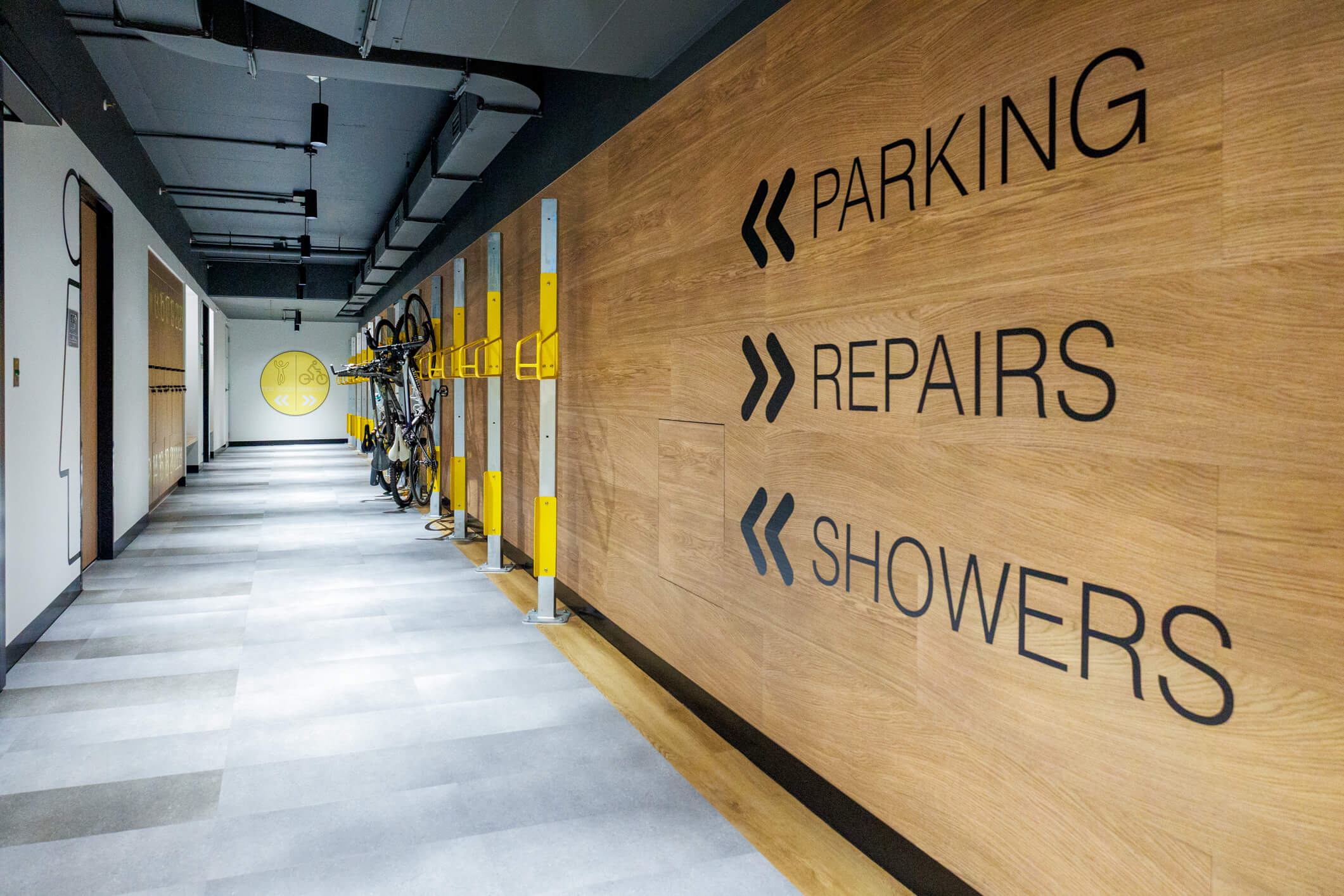
Creating a welcoming and functional space to boost active travel in your office or commercial building can be an attractive addition for prospective tenants.
Installing end-of-trip facilities used to be viewed as a luxury but is now a requirement under the Queensland Development Code for all new major developments and those undergoing significant renovations. They are also an important value-add for property owners in a competitive market for tenants.
These amenities can be a challenge to design but, done right, can be a space that serves as a significant drawcard for potential tenants and a highlight for their employees.
What are end-of-trip facilities?
End-of-trip facilities are designed to support employees who actively travel to work, ride a bike, walk or jog, and exercise during their lunch break.
They are typically housed in a building basement, including facilities for people to park bikes, secure equipment, shower, and change.
End-of-trip facilities are becoming an increasingly important addition for tenants in recognition that they can increase staff wellbeing and promote healthier lifestyles, as well as reduce demand for car parking.
Well-designed and welcoming end-of-trip facilities can also help to boost a company’s image and are often a selling point for organisations looking to attract and retain staff.
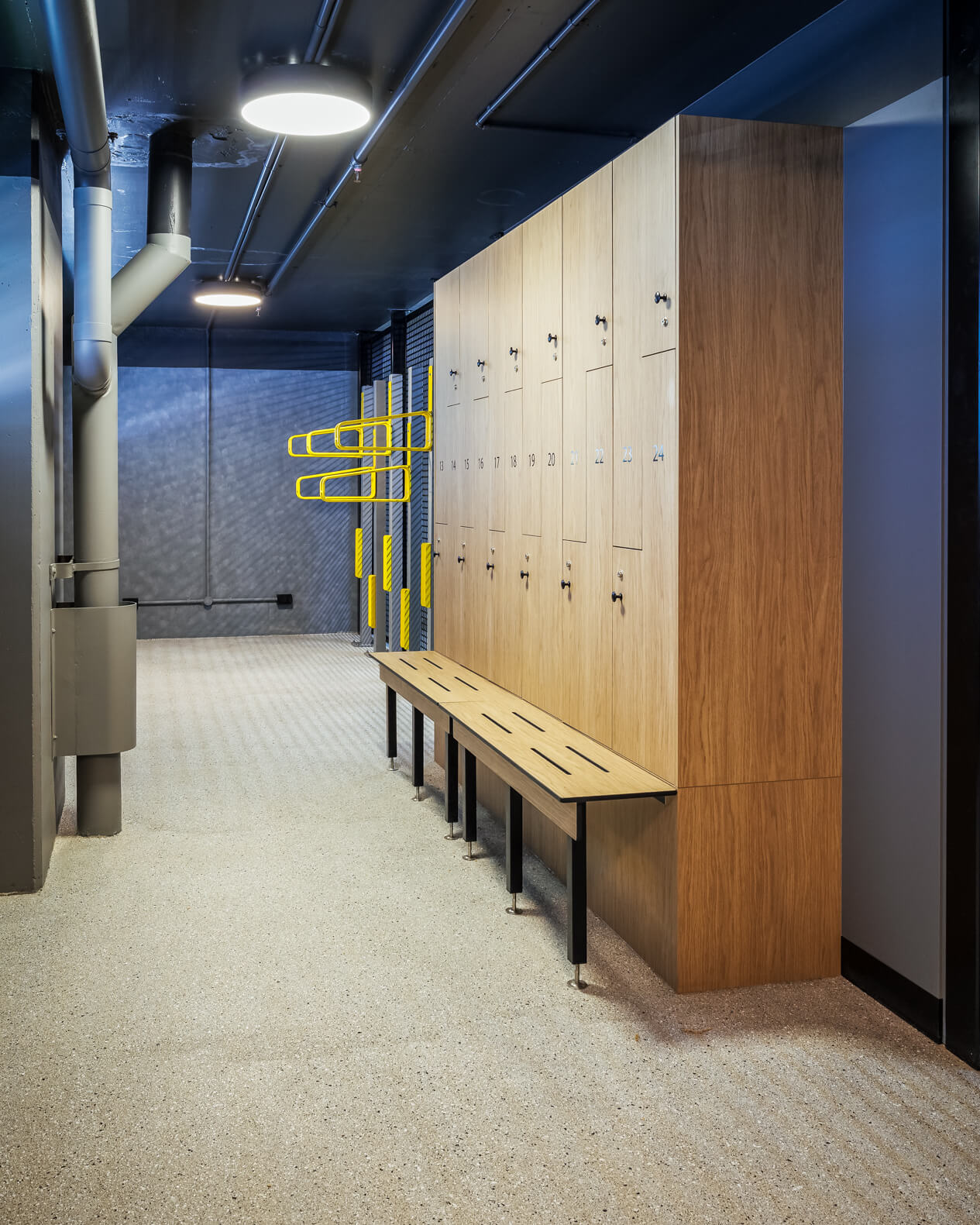
Why are end-of-trip facilities important?
End-of-trip facilities are a mandated requirement for all new major developments and major renovations to major developments in designated Queensland local government areas.
A new major development (commercial office building, shopping centre etc.) with a floor area greater than 2000m2 must include end-of-trip facilities that are easily accessible and located within the building or on-site within 100m of a main entrance.
Similarly, a major addition to a development that increases the floor area by 1000m2 must also provide end-of-trip facilities.
These amenities are also important for buildings seeking to improve their sustainability ratings.
Under the Green Building Council Australia’s Green Star buildings rating system, credits are awarded to buildings that facilitate a reduction in private car dependency.
Specifically, buildings can be awarded credits towards their Green Star rating if they have installed active transport facilities like secure bike parking, showers, changing amenities and lockers.
These facilities must be deemed “appropriate to encourage their use over that of private vehicle use”.

What should be included in an end-of-trip facility?
End-of-trip facilities must be designed to support those who bike, walk to work, or exercise during lunch.
Accordingly, they must be easy to access and include facilities such as:
- bicycle storage
- changing areas
- ironing stations
- bench seating, and
- access areas for circulation.
Wheelchair and ambulant-accessible toilets and showers are also a mandated requirement for new facilities, so they must be included whether you are building new or updating an end-of-trip facility.
Privacy and security are important factors to consider, along with the provision of drinking water.
Some facilities also include bicycle repair equipment such as foot pumps and tyre repair kits and courtesy equipment like hair dryers, irons and ironing boards, clothing hooks and mirrors.
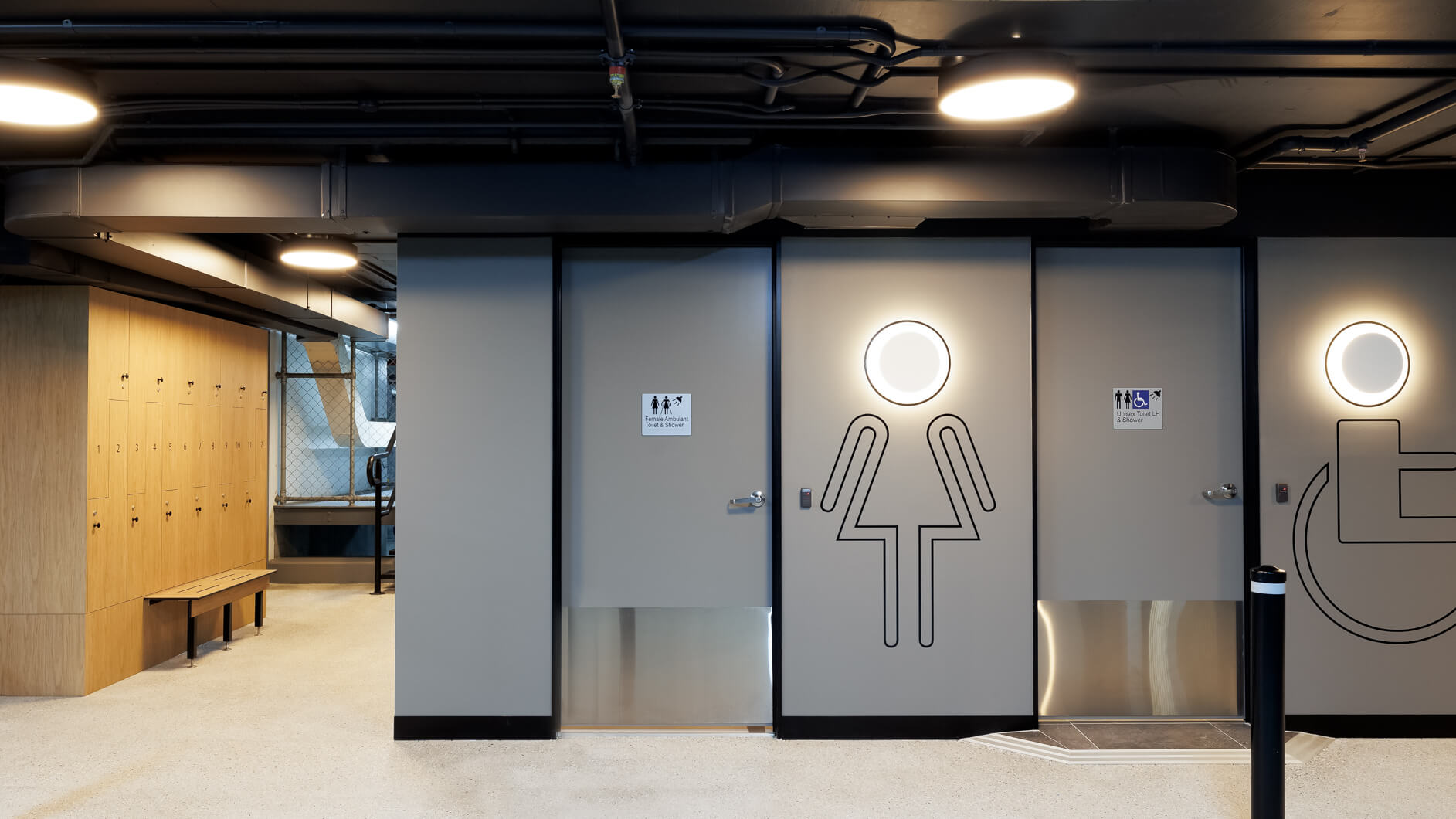
What are the challenges in building end-of-trip facilities?
End-of-trip facilities are frequently located in the basements of buildings to allow ease of access.
This can present design challenges along with tricky approvals processes involving town planning, certification, and hydraulic and services designs.
Wheelchairs and accessible toilet and shower facilities also require careful planning and coordination to ensure they are compliant.
Further, should a building owner want to seek a Green Star rating of the facilities, the design needs to consider the specific assessment requirements.
Other design challenges when building end-of-trip facilities can include ensuring access is safe, convenient and appropriately signed.
As these facilities are often co-located with car parks, it’s crucial to ensure there is no hazard to pedestrians or interference with emergency access or loading bays.
Access routes must also ensure sufficient clearance for mounted bicycle riders and avoid steep ramps, drainage grates and other potential hazards.
Appropriate levels of surveillance and lighting are also important for security.
What are the best examples of end-of-trip facilities?
End-of-trip facilities can be an attractive addition for prospective tenants, especially when well-designed and outfitted.
Some of the best examples of end-of-trip facilities include:
- Dedicated towel services
- Vending machine for emergency bicycle repair parts
- A variety of bicycle storage facilities, including high rails and on-ground hoops
- Valet laundry services
- On-site bicycle repairs
- Electronic lockers
- Bathroom and grooming products
- Charging stations for electric bikes.
RAW Commercial Projects have designed and delivered a number of end-of-trip facilities, including 301 Coronation Drive, Fortitude Valley end-of-trip facilities , Rivergate Marina and 444 Logan Road .
Find out how our design and construct process can provide a seamless experience for planning and creating your end-of-trip facilities.
- Tips and Trends
Related Posts
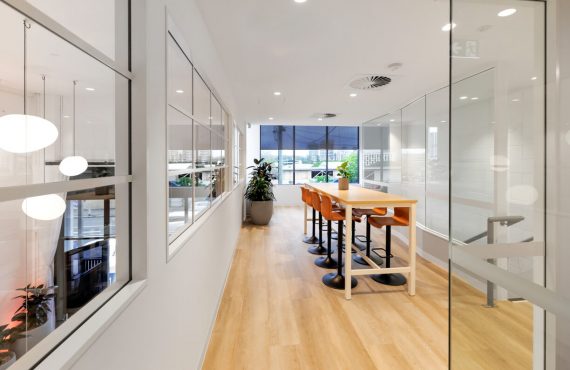
Office fitout trends for 2024
Take a sneak peek into the accelerating and emerging trends
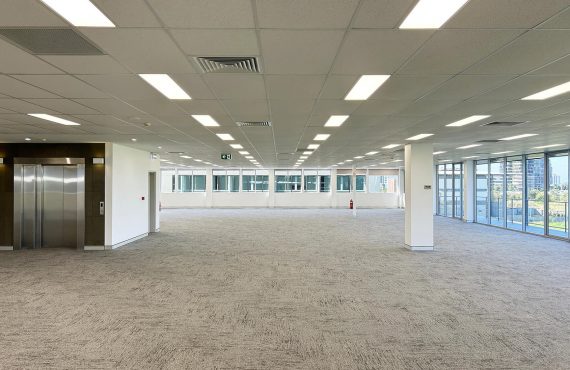
Commercial property make goods
When it comes to commercial property leases, tenants are often
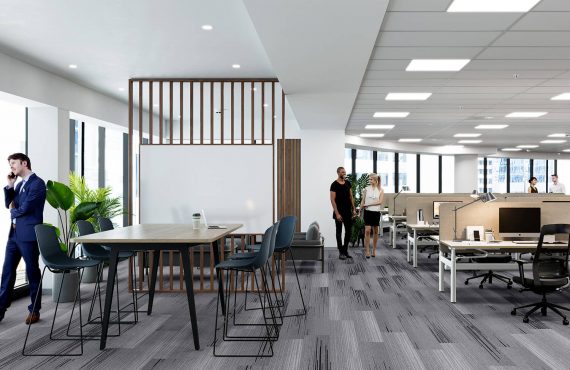
- Using Renders to enhance your Custom Design Fitout experience
Custom designing modern workplaces involves balancing function and beauty. Our
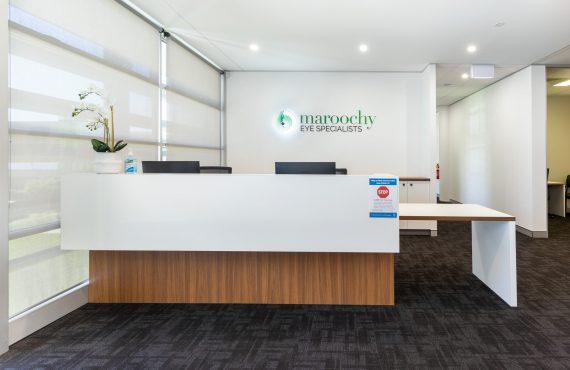
Why signage is an important part of your branding strategy for bricks and mortar businesses
Despite a move for more services to operate remotely, many
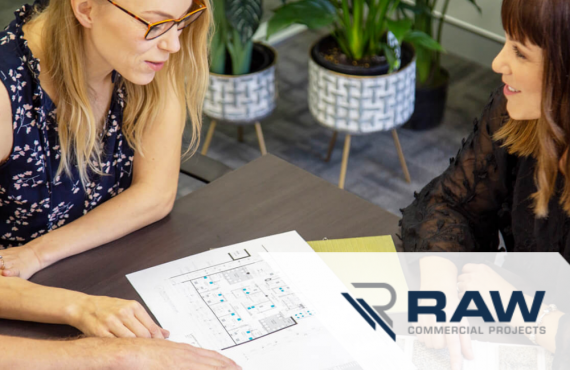
Building Assessment Services Helps Business Owners Make Informed Decisions
Early this year, we launched our new Building and Design
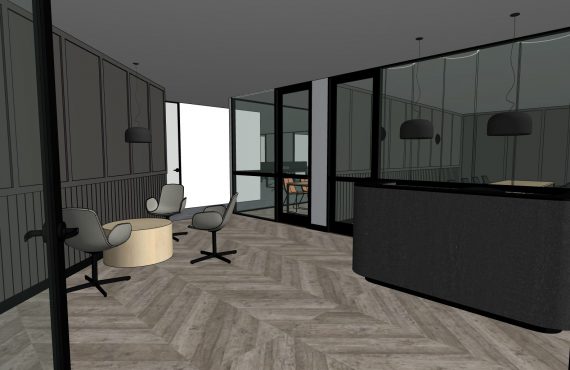
Designing Speculative Fitouts – Benefits for Landlords and Tenants
Demand for ready to occupy office space is making speculative
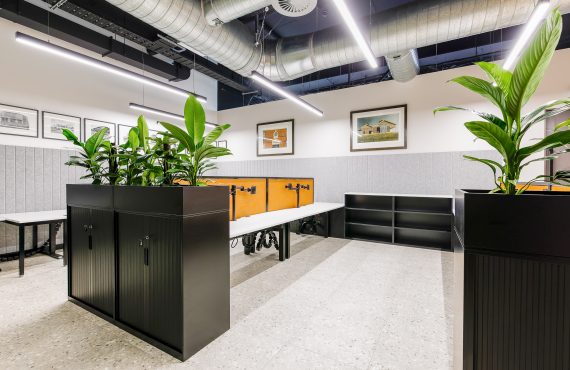
Your Guide to Creating a Well-lit Designed Office Space
Lights can be used for many different functions – everything
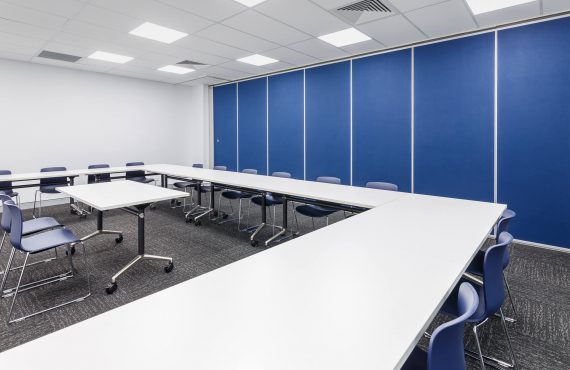
Creating Space and design Flexibility with Operable Walls
At RAW Commercial Projects, we’re all about functionality, value and
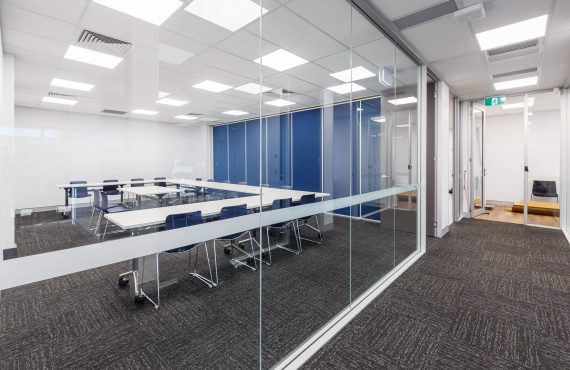
Tips for Choosing the Right Premises for your Business
Most people think that location is the prime consideration when
RAW Commercial Projects is Four Years Young
Congratulations to Managing Director Richard Wiseman and RAW Commercial Projects
- Sunshine Coast CBD office development

© 2024 RAW Commercial Projects | All Rights Reserved | ABN 46 617 278 378 | QBCC Licence 15042263
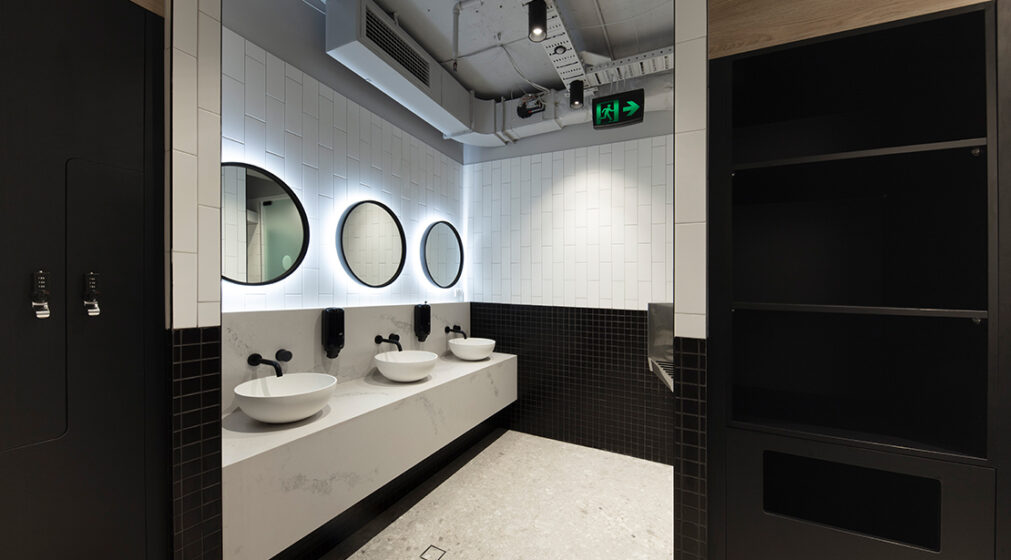
End of Trip Facilities – The New Normal
Employees have moved with the times adapting their method of transport into the office. With this change, building owners have had to adjust to coincide with employee’s health kick. The exercise boom over the last 20 years has seen End of Trip (EOT) facilities become an essential amenity within almost every office tower in the Brisbane CBD. To be exact there is just a mere 19% of Brisbane office towers within the CBD that don’t currently have an EOT onsite.
So what is an End of Trip Facility? EOT facilities are areas within an office building that are intended to help people who walk, cycle or jog to work, or for those who enjoy exercising during their lunch break, an amenity to help employees get ready or freshen up for their workday.
Specifically, they include bike racks, lockers, showers, changing rooms and depending on the building, laundry services, irons and hair dryers. Some buildings like 127 Creek Street have implemented special features like a cool down station which other buildings don’t offer its occupiers. In accordance with the Queensland Development Code , any new major developments across the CBD now requires that end of trip facilities be designed and installed. With a big advantage to them being the fact they aren’t specific to any type of office or business type and can benefit almost any individual working within the CBD.
An EOT facility can enhance and encourage employees to utilise non-motorised transport options such as jogging, walking, and riding to work. These options promote a healthier lifestyle for all employees and inadvertently enhance productivity and mental health. Additionally, another key advantage to the facility is that it reduces the amount of car parks tenants will need within their office. For both smaller and larger tenants this will cut down on some major costs that are otherwise factored towards their annual rent.
A survey conducted by the Sydney Active Transport found that “19% of cyclists rode to work more regularly because their workplace made it easier” through the implementation of EOT facilities. This recent increase, especially over the last 5-10 years has been essential for the well-being and health of many employees. As such, they have become a core requirement for many CBD office towers and have played important roles in securing tenants to different buildings. Thus, driving landlords and building owners to now not only just provide EOT facilities but, to make sure they are of high standard and good quality.
As time progresses and EOT’s become an expected feature within every office tower, older assets will need to look to install EOT’s in order to be competitive within the leasing market. An example of this would be 15 Adelaide Street and 239 George who have just recently installed EOT facilities within the last 12 months to secure higher-grade tenants and improve their asset.
If you are unsure if you have an EOT within your office building, contact your Property Manager who will allow you access and provide you with information on the facilities available.
More Insights

Glossary of Terms - Heads of Agreement

7 Benefits of a Column-Free Office Space
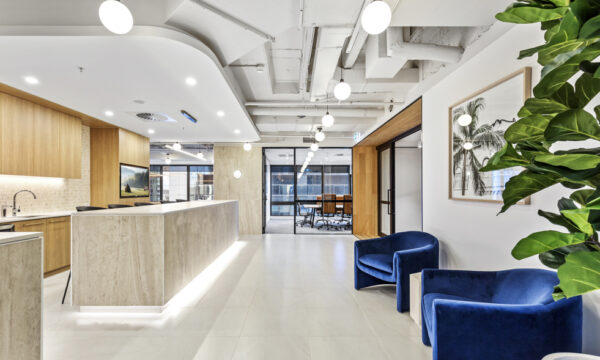
Our Top Tips to ensure your new Office Space is as functional as possible
Not sure how much office space you need our calculator could help..
At the end of your visit today, would you complete a short survey to help improve our services?
Thanks! When you're ready, just click "Start survey".
It looks like you’re about to finish your visit. Are you ready to start the short survey now?
End-of-trip facilities
End-of-trip facilities are designated places that support people who:
- cycle, jog or walk to work rather than driving or taking public transport
- exercise during their lunch break.
End-of-trip facilities include:
- secure bicycle parking and storage facilities
- locker facilities
- showers and change rooms.
Benefits of end-of-trip facilities
Providing end-of-trip facilities can:
- encourage people to use non-motorised transport
- promote a healthy, more active community
- reduce reliance on cars.
Building owners and tenants can also get benefits from end-of-trip facilities, including:
- a healthier workforce
- increased staff wellbeing
- higher productivity
- an improved corporate image
- reduced demand for car parking.
Requirements for end-of-trip facilities
Queensland Development Code 4.1 – Sustainable buildings (PDF, 371KB) requires that end-of-trip facilities be designed and installed for all new major developments, and major additions to major developments, in designated local government areas.
New major developments are the following building types with a floor area greater than 2,000m 2 :
- commercial office buildings
- shopping centres
- tertiary education facilities
Major additions to major developments, including any addition to an existing major development that results in additional floor area of at least 1,000m 2 , must also provide end-of-trip facilities.
End-of-trip facilities must be:
- easy for users to access
- located within the building or on-site within 100m of a main entrance to the building
- provided in accordance with prescribed workforce or occupant ratios.
Flexibility for local government
To ensure the code is flexible and adapts to local conditions, local governments may also:
- require additional bicycle parking and storage facilities, locker facilities and change rooms
- expand the definition of 'major development' to cover a broader range of buildings.
Designated local government areas
Designated local government areas are the local governments listed in Schedule 1 of QDC 4.1.
If a local government is not listed there, contact that local government for advice as some local governments have existing end-of-trip requirements in their planning scheme. These provisions may place additional requirements over those required by QDC 4.1.
QDC 4.1 may also be adopted through a local government planning scheme or via a council resolution process.
Check with the relevant local government for more information.
Existing buildings
Building owners don't need to incorporate end-of-trip facilities into existing major developments unless they carry out a major renovation that creates additional floor area of at least 1,000m 2 .
Sometimes it may not be appropriate for a major development to include end-of-trip facilities, such as when:
- a major development is a significant distance from a population centre
- road conditions are hazardous to cyclists.
In these instances, the building application would be referred to the local government to decide whether the major development should be exempt from the end-of-trip facilities standard under QDC 4.1.
- Last reviewed: 1 Oct 2022
- Last updated: 17 Jul 2024
End of Trip Facilities
End of trip facilities in perth commercial building design & office fit outs.
In the fast-paced world of modern business, creating a workspace that caters to the needs of employees has never been more crucial. One key element that has gained significant attention in recent years is the concept of “End of Trip Facilities.” These facilities are more than just an afterthought; they are a vital component of the modern office environment or commercial building design and new major developments, addressing the needs of the contemporary workforce. In this blog post, we’ll explore the significance of End of Trip Facilities, why they are a valuable investment for your staff, their benefits, essential features, and more.
What are end of trip facilities?
End of Trip Facilities, often abbreviated as EOTF, refer to specialised amenities within workplaces designed to support employees who commute to work, particularly those who use sustainable transportation modes like cycling or jogging. These facilities typically include features such as showers, bike storage areas, changing rooms, lockers, and drying spaces.
The primary aim of End of Trip Facilities is to enhance the overall employee experience, supporting people who, for example, cycle to work or exercise during their lunch break. This makes the transition from commute to work more comfortable, while promoting workplace wellness and sustainability.
The growth in staff cycling in Perth
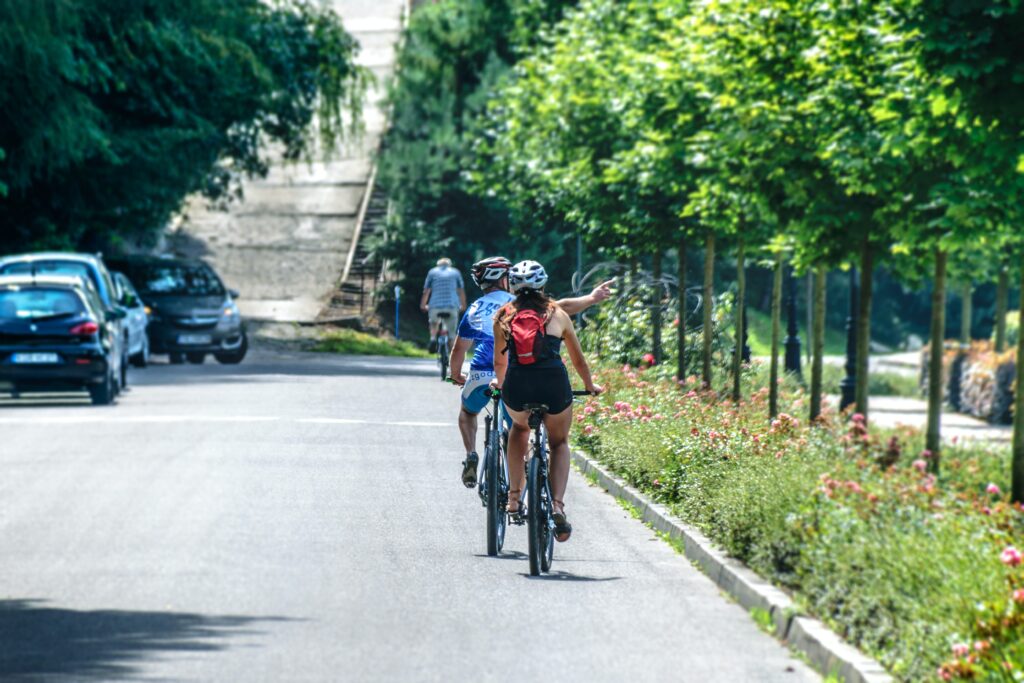
Transport WA states: “Perth’s generally flat landscape, good weather most of the year and growing network of cycling routes offer the opportunity for more travel by bicycle…
Each workplace has different needs and capacity for facilities, so a good start is to conduct a site audit of available space or current facilities and consider your options for parking, changing and storage.”
When considering your staffs lifestyles and the shift to a healthy lifestyle in Perth, you can see how End of Trip Facilities play a crucial roll in enhancing staff cycling, shedding light on the benefits they bring to individuals, organisations, and the environment. Modern workspaces should consider end of trip facilities planning and design as part of their Office Fitout Projects.
Key Features of End of Trip Facilities:
To create an exceptional End of Trip Facility, certain elements are essential:
Showers: These are more than just a convenience; they rejuvenate employees after their commute, ensuring they start their workday feeling refreshed and invigorated. Moreover, they encourage active commuting by eliminating concerns about post-ride perspiration.
Changing Rooms: Offering dedicated changing rooms provides employees with a private, clean space to change into work attire or freshen up after their commute. This ensures they can transition seamlessly from the outdoor environment to the workplace without any discomfort.
Lockers: Lockers are more than just secure storage spaces; they offer employees peace of mind. Knowing that their personal items are safely stored while they work contributes to stress-free and clutter-free work environments.
Drying Areas: Drying areas are essential to address the practical challenges of cycling in various weather conditions. They guarantee that wet clothes and gear dry quickly and efficiently, so employees don’t have to worry about discomfort or inconvenience during their workday. This feature is especially crucial in regions with variable weather patterns.
Bicycle parking facilities
Secure and well-organised bike storage is a fundamental feature, promoting eco-friendly commuting practices. Cyclists need a dependable place to keep their bicycles during working hours, ensuring their prized possessions are safe and easily accessible.
More than just a practical amenity, bike parking facilities symbolise a commitment to a greener, healthier workplace. They not only promote eco-friendly transportation but also foster a sense of community among cyclists, creating a shared space where employees can connect over their common commitment to sustainable commuting.
Meeting Accessibility requirements
Ensuring accessibility requirements are met in End of Trip Facilities is paramount in creating an inclusive and accommodating workplace environment. These facilities should be designed to cater to the diverse needs of all employees, regardless of their physical abilities.
Accessibility features may include wheelchair-accessible showers and changing rooms, low-height amenities for those with mobility challenges, clear and wide pathways, and appropriately positioned grab bars for added safety. By prioritising accessibility, businesses demonstrate their commitment to inclusivity and make a significant contribution to creating a workplace where everyone feels welcome and valued.
The Benefits of End of Trip Facilities
Enhancing workplace experience:.
Well-designed End of Trip Facilities can transform an ordinary workspace into an extraordinary one. These facilities go beyond mere convenience; they enhance the overall workplace experience, fostering a positive atmosphere that employees look forward to.
Boosting Employee Satisfaction and Retention:
Happy employees are more likely to stay with a company. End of Trip Facilities contribute to higher job satisfaction by simplifying daily routines, especially for those who commute. The result? Increased employee retention rates.
Why Choose Office Fitout Professionals for your End of Trip Facilities Design and Fit-Out
Peter Gibson from Office Fitout Professionals states:
“As the demand for healthier, more sustainable workplaces continues to grow, we’re witnessing a significant trend with our clients: More than ever, businesses are incorporating End of Trip Facilities into their commercial designs, to promote staff fitness and well-being. These spaces are not just about convenience; they represent a commitment to employee health and a greener future. It’s inspiring to see companies embracing this trend, creating environments that empower their workforce to lead active, balanced lives.”
End of Trip Facilities are no longer just a workplace luxury; they are a necessity in today’s fast-paced business world. By considering the benefits, essential features, customisation options, and design trends, you can elevate your workspace and create an environment that promotes employee satisfaction and productivity. When it comes to providing an exceptional workplace experience, End of Trip Facilities are an investment in your company’s success.
Ready to enhance your workspace and create seamless transitions from home to work for your employees? Reach out to us today for a consultation. Our experts are here to assist you in designing and building End of Trip Facilities that truly elevate the employee experience. For more information, please get in touch .
Other Fitouts
Maximising roi with smart office fit-out strategies, how office fit out companies simplify the process for commercial real estate agents, the current trends in office space development 2023, most appealing commercial office space design ideas.
- How can we help?
- Phone This field is for validation purposes and should be left unchanged.
- Two-Tier Bike Storage
- Bicycle Shelters, Canopies, Enclosures
- Bike Racks & Stands
- Folding Bike Storage and Lockers
- Bike Repair Stations & Pumps
- Street Furniture
- End-of-Trip Facilities
View all products
Home > Blog > The Evolution of End-of-Trip Facilities Around the World
The Evolution of End-of-Trip Facilities Around the World

By Jonathan Oldaker
At lunchtime along the Embankment Thames path, you’ll find hundreds of runners with one thing in common: it’s a working weekday, and they’re on their break.
Amongst a sea of JP Morgan challenge t-shirts, large groups chat about their weekends, pairs run interval sessions, and lone wolves look to reset and escape the office.
But, I hear you ask, surely they’re going to be hot and sweaty for this afternoon’s big meeting? Not if they’re able to shower and freshen up beforehand.
Running during work breaks is just one way office life has evolved in recent years. And it’s End-of-Trip facilities that are helping enable the change.
Whether it’s a Pilates class, a cycle commute to work, a gym break, or the aforementioned team jog, having lockers, changing rooms, and showers is changing the game in modern office buildings.
It’s a global shift, but one with key differences in office buildings from L.A. to London, and Paris to Melbourne. To learn more, we spoke with Josh Kimberley, the Design Manager at Australian industry leaders Five at Heart .
The Importance of End-of-Trip Facilities to Tenants and Employees
End-of-Trip facilities began with cycle parking. Coming at the literal end of your trip to work, these areas provided a safe place to store and park your bike. Showers, changing areas, and lockers were quickly added, all with the purpose of catering to the active commuter.
Fast forward to today and you might even find saunas, gyms, and even a barber’s chair.
So just how important have these facilities become? “They have become a standard inclusion in buildings and are something tenants just expect to have,” says Josh.
“They play a huge part in the tenants’ wellbeing and fitness by making their active journey and/or lifestyle easy to incorporate into their day in the office.”
Amidst a post-COVID office landscape where hybrid working is the norm, it’s no surprise that EoTs have quickly evolved.
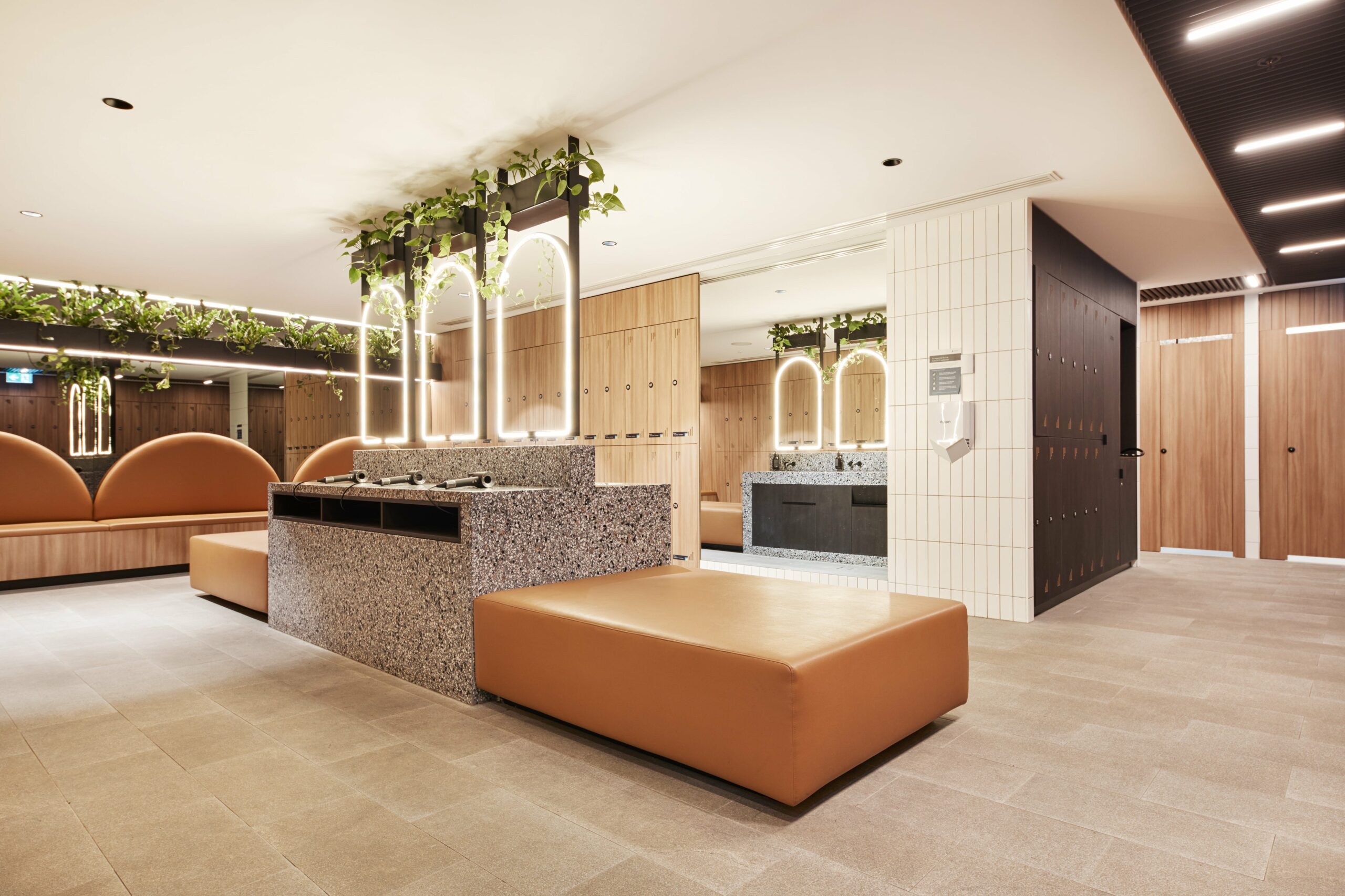
The Continued Evolution of EoTs
It is perhaps time to move on from thinking of EoTs as simple, box-ticking, functional parts of a building.
“People tend to think of End-of-Trip facilities as being mainly aimed at cyclists, but this couldn’t be further from the truth,” explains Josh. “There is a higher percentage of users who run, go to the gym, freshen up for drinks after work, or do yoga and Pilates classes. This has led to the incorporation of a whole host of new additions.”
Some of these new features might surprise you, with the list including:
- Wellness/multi function space which can be used for exercise classes or hired out for other functions.
- Rooms with spin bikes.
- Designated spaces and equipment for yoga and reformer pilates
- Treatment rooms which can be hired out for physio, massage, beauty treatments.
- Barber chairs for haircuts.
- Saunas or steam rooms, and plunge pools.
- Sports halls for Basketball and football
- Open gyms with equipment
All these, of course, require space within the building—space that could perhaps replace unused cycle parking.
Josh has seen many buildings that have had to install a very high number of bike racks due to council or external certifications requirements.
“When these projects are refurbished, we see them reduce their bike parking because the demand isn’t there and they are not even close to being at full capacity. Having your bike parking number be in line with actual usage allows the building to fit in these amenities mentioned above,” says Josh.
Once in place, these extra features can make a big difference in leasing out office space, as well as luring more workers back into the office.
Josh outlines a real-life example where a building includes a reformer Pilates room. They’re able to hold classes every day at lunch, with the price subsidised by the building (so it’s half the price compared to elsewhere). This class will almost always be fully booked, compared to the bike parking, which is not even half full.
“Amenities like this add value and benefits to tenants’ lives and are a big draw for getting people back into the office,” says Josh.
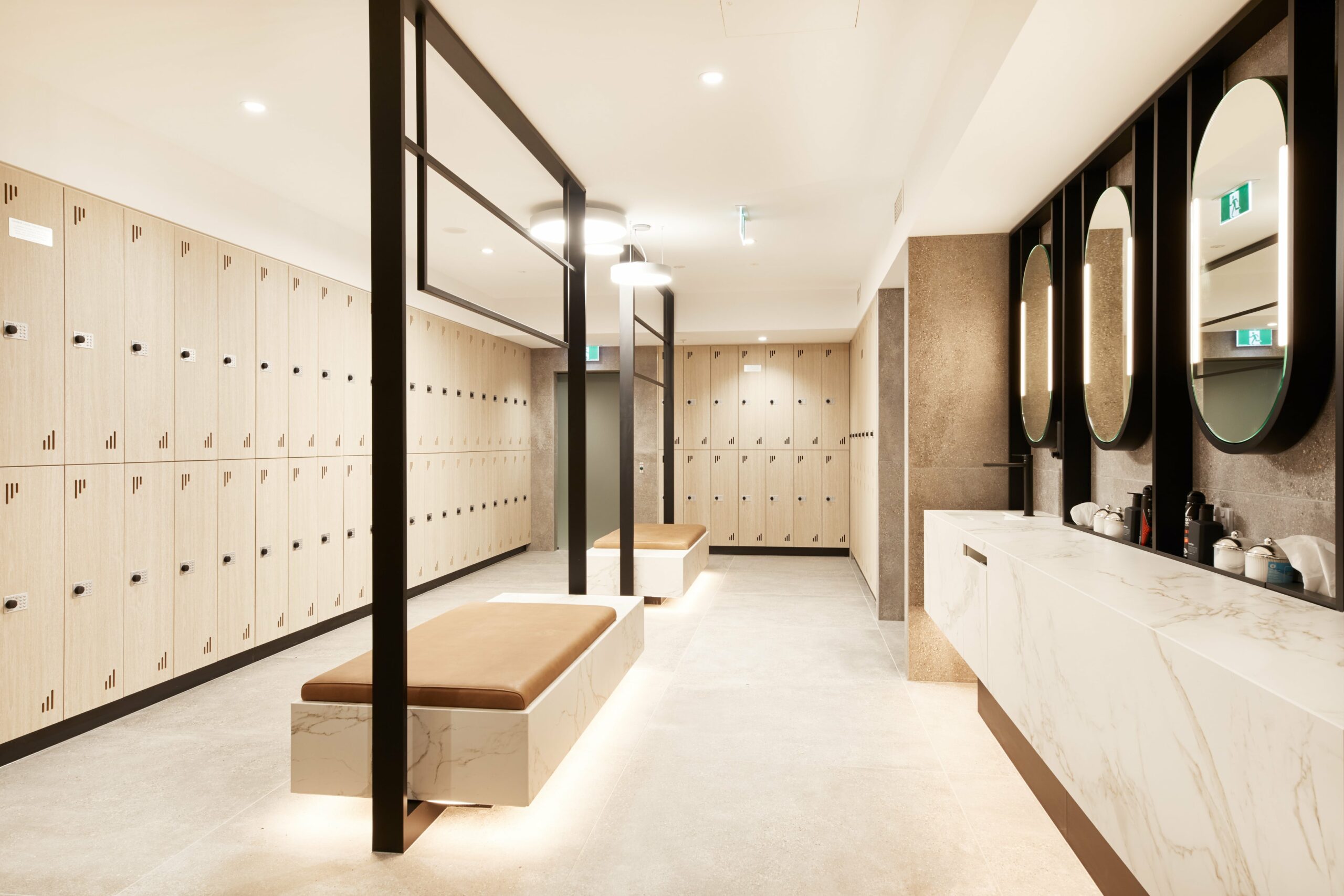
Global Differences within End-of-Trip Facilities
When it comes to End-of-Trip facilities , the key difference between cities boils down firstly to commuting habits.
“With America being so vast, the market varies drastically. Bike parking is common in major cities, but the numbers are drastically smaller compared to the UK and AUS,” explains Josh.
“Generally, the majority of facilities have small bike rooms (these tend to be bike cages in the car park) with minimal provision of lockers and showers. EoTs are not on the same level when it comes to usage as well as fit and finish compared to AUS and the UK”
In London, there is a much greater focus on cycle parking capacity numbers compared to other major global cities.
“The numbers required for bike parking are astronomically high and are not in line with real life usage. This often leads to the facility providing a very high percentage of two tier racks in order to meet the required number.”
Furthermore, this can lead to a lack of variety in cycle rack options, harming the user experience, according to Josh.
“London appears to be focused on bike riders/parking, with locker and shower numbers being lower, not catering for active users who run, go to the gym, freshen up for drinks after work, or do yoga and Pilates classes.”
“These amenities are currently lacking, but we are starting to see more of them appear in designs.”
That shift from purely cycle parking to the wider opportunities of EoTs is something Australia has been an early adopter of.
“Australia has a much lower and flexible requirement when It comes to the numbers required for a facility,” says Josh. “This ends up providing a facility fit for purpose as it’s based more on real life usage.”
“The bigger standout buildings have been providing extra amenities for some time now. In Australia, facilities are focused more on the well-being of users and encouraging different forms of activity, not just amenities for bike riders.
As well as higher locker numbers, and more realistic cycle parking numbers, some buildings in Australia are also moving beyond the idea that EoTs belong only in the basement.
“In Australia we also have facilities moving onto ground level, or above ground, making use of natural light. It’s common for facilities to have their own dedicated ground level entrance like the main lobby has.”
Bringing EoTs onto the ground floor further cements their growing importance within a building. Making the main entrance the same as the regular lobby tells tenants this is a welcoming, active building.
It’s clear that End-of-Trip facilities are rapidly evolving, and perhaps starting to outdate building regulations and the needs of tenants.
The continued push to look at office buildings as more than just desks and meeting rooms brings with it amazing potential for developers and employees alike, and presents an important opportunity to revolutionise office working.
Image credits: Five at Heart
Newsletter sign up
The latest active travel news, cycle parking solutions, and advice
Related articles
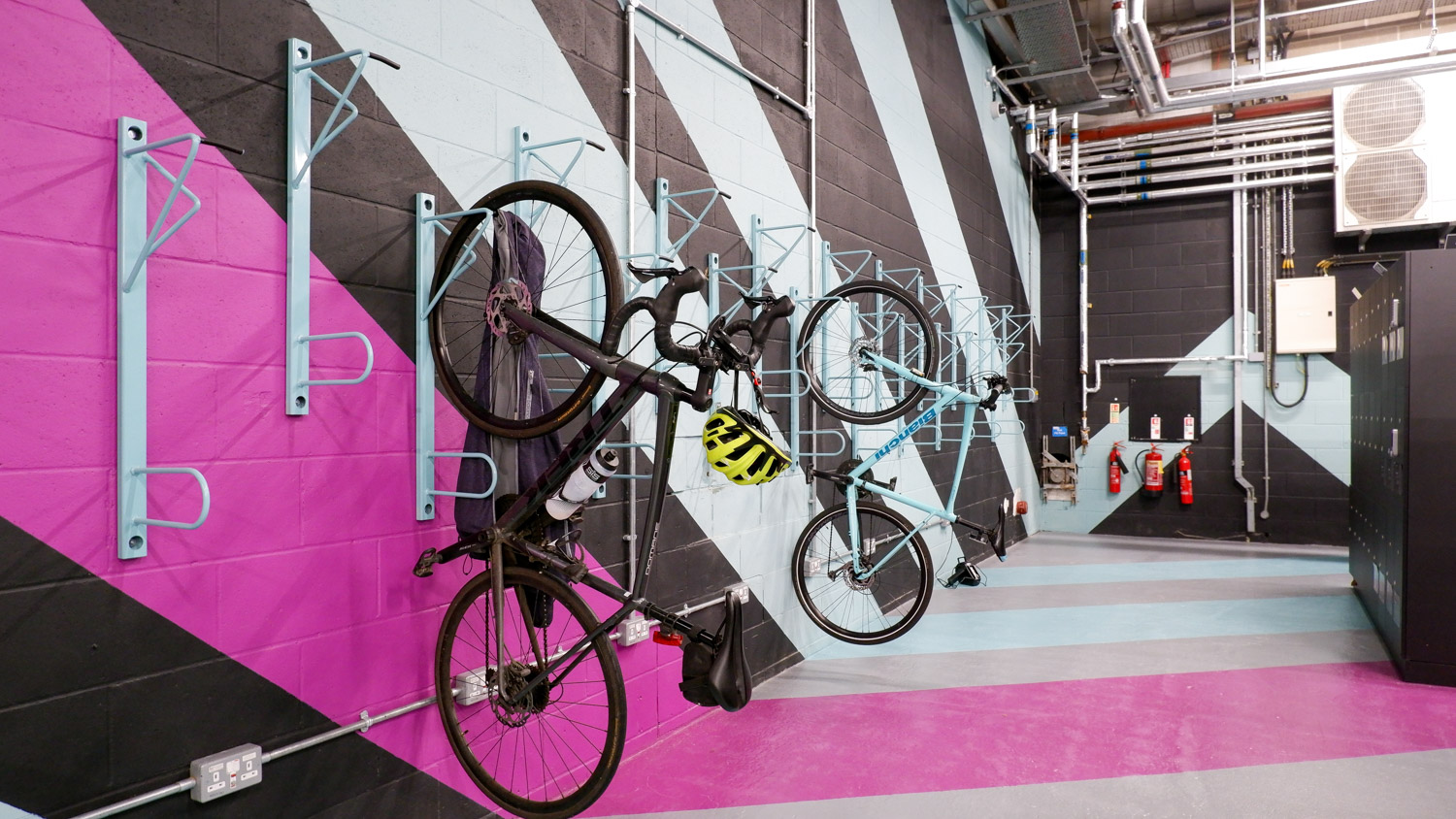
August 29, 2024
How To Specify Vertical Bike Storage
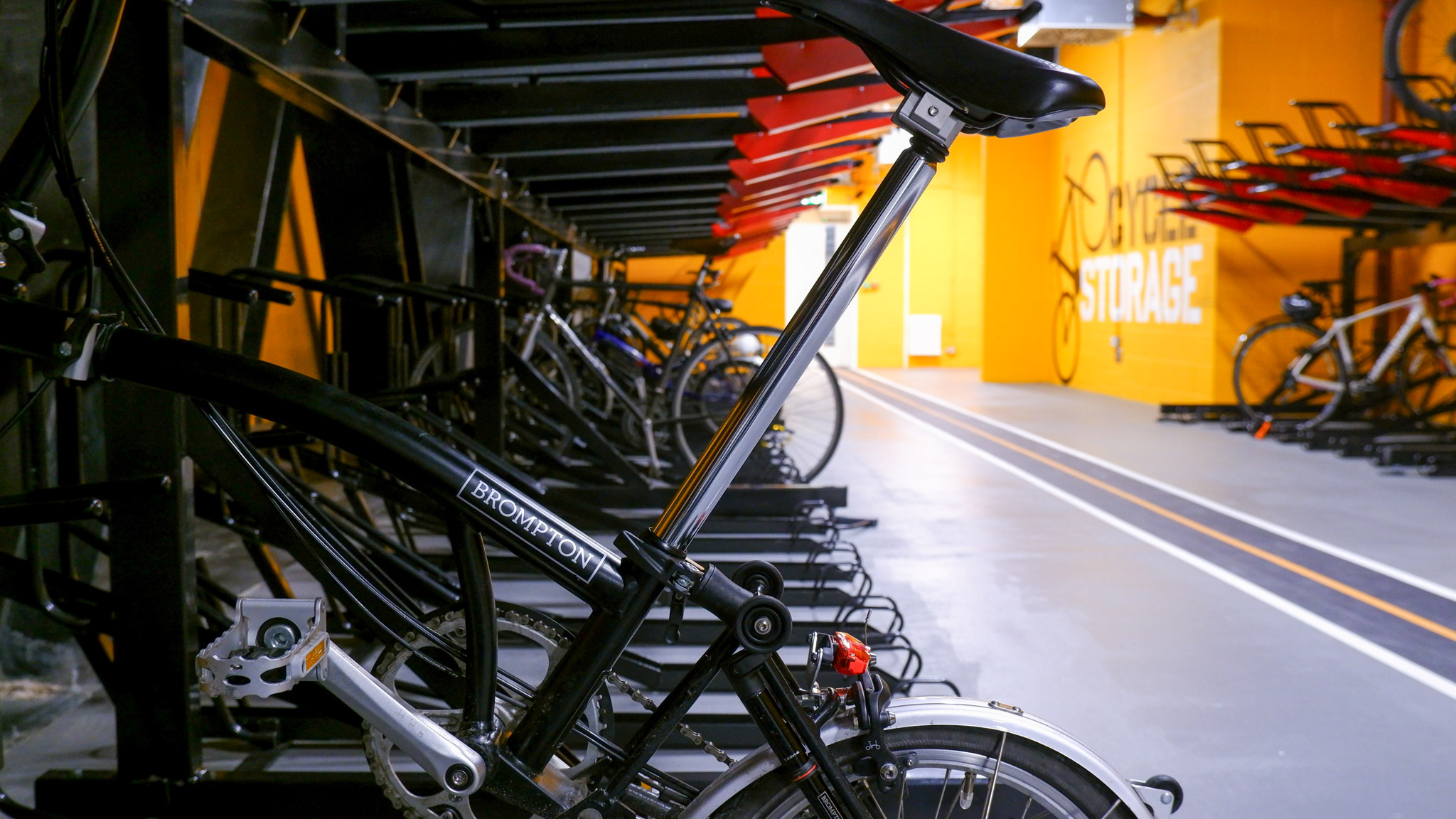
June 6, 2024
Bike to the future: Inside the UK’s most sustainable office buildings
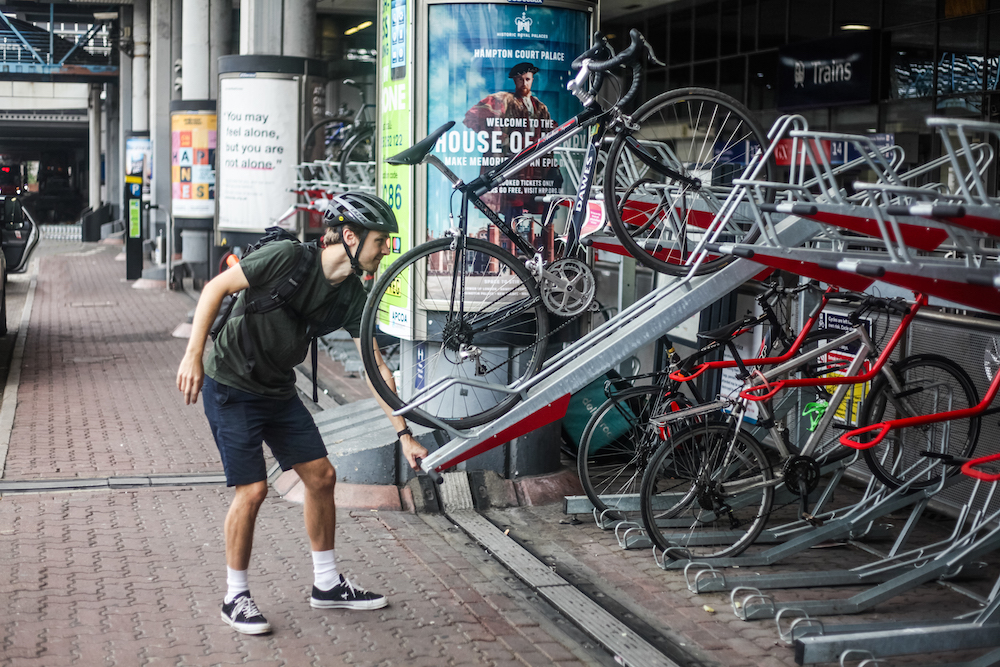
April 24, 2024
Everything You Need To Know About Two-Tier Bike Racks
Turvec are accredited by.

- Service & Support

End-of-trip Facilities : A Refreshing Trend
Interior images of Grosvenor Place End-of-Trip Facility kindly provided by Harry Seidler & Associates Architect: Harry Seidler & Associates Photographer: Dirk Meinecke
An emerging trend in new buildings and major refurbishments; end-of-trip facilities are typically identified as shower, bathroom and storage facilities for people using non-motorised methods of transport to and from work, such as bicycles.
Where once businesses and building owners would be focused on accommodating onsite car parking for their employees and tenants, today the trend is to encourage building users to use non-motorised forms of travel by providing end of trip facilities.
And increasingly, end of trip facilities are becoming more elaborate and comfortable – reminiscent of a health club or retreat rather than gymnasium change room. From a leasing perspective, these facilities have now become a significant draw card for blue chip tenants and some fitouts are superb.
For instance, a recently refurbished commercial office building in Melbourne has created a dedicated, hotel-like entrance to its end of trip facilities.
But it shouldn’t surprise. Not only are tenants demanding more sustainability initiatives in their workspaces, but bicycle parking and end of trip facilities also contribute sustainability credits towards a building’s GBCA Green Star rating making it a win-win for property owners.
At Grosvenor Place in Sydney’s CBD, a recently completed building refurbishment has included the addition of luxurious end of trip facilities that have been likened to a 6-star hotel.
Designed by Harry Seidler & Associates as part of a $20 million upgrade; tenants of the 1980s-built skyscraper have access to the marble-tiled ‘Camerino’ (Italian for dressing room) with individual shower cubicles and changing facilities.
Occupying a space of 800 square metres, this magnificent facility includes 30 shower rooms, 400 lockers and storage for 170 bicycles for those riding to and from work each day. It even includes a bike repair room.
Among its features are power outlets for device charging, ironing boards, and grooming stations with hairdryers and other personal appliances.
Automatic Heating is proud to have been involved in the project, from the concept design stage; where we assisted with product selection, specification and plantroom layout, through to completion and commissioning.
Domestic hot water to the facility is supplied by two 1000L Thermex stainless steel hot water storage tanks heated by two 150kW Meridian condensing hot water heaters.
KEY PROJECT POINTS
High capacity tanks in a compact size
The Thermex tanks were chosen for their compact size and high capacity coils which enable maximum heat transfer and fast re-heat time. This ensures ample hot water supply even at the busiest times of the day.
No access to natural ventilation
A key consideration that guided the use of Meridian Condensing Water Heaters in this project was that natural ventilation was impossible to achieve due to the plantroom serving the ‘Camerino’ being located in the basement and fully sealed.
Fortunately, the design of the Meridian provides for the connection of an air inlet duct which completely resolved the ventilation issue. In addition to this, in respect to the removal of combustion gases, the built-in burner fans were able to expel the exhaust gases through the flue without the use of any additional fans.
Want more information? Automatic Heating offers a free energy usage appraisal, technical advice and no-obligation consultations on system designs. Contact us at [email protected] or call 1800 337 959.
No products in the cart.
Why End of Trip Facilities are Worth Installing in Your Building
End-of-trip facilities have been taking Australian businesses by storm. They’ve become a beneficial utility to a lot of large companies that can promote good health and fitness habits and improve the day-to-day functions and productivity of a workplace.
The design of these spaces is quite simple and flexible. As with any workspace it can be designed to favour those that will use it, elements like bathroom and shower interior wall panels , cubicles, bench seating , lockers and bike stands can all be added to create a functioning space for your employees.
What are End-of-Trip Facilities?
End-of-trip facilities are designated places for those who cycle, jog or walk to work or for those who exercise during their lunch breaks. These spaces are a response to the rising number of people who want to use alternative methods of travel, rather than driving or using public transport. They can include features such as secure bicycle parking, lockers nz , showers and change rooms. They’re a great way to promote healthier ways to travel whilst still keeping up appearances and cleanliness in the workplace.
How Are End-of-Trip Facilities Beneficial To Your Employees and Business?
Boost marketability of building.
Because of their connection with modern-day office and building standards these spaces are becoming more common in new and old buildings such as apartments, offices, major shopping centres and hospitals. Many older buildings are having these amenities added in them to drastically increase appeal and demand.
Companies and businesses are able to save on many fronts. For instance, the charge for bicycle parking is much lower than the rental for car parking. You also save on maintenance costs if and when they install vertical bicycle racks.
EoT’s can also decrease the demand for parking spaces that usually is a tricky thing to gain when finding an office building, especially the closer into the city center you go. This means that if you need to relocate that task can become a lot easier, as most buildings are starting to install these spaces. When your employees use sustainable transportation for commuting, you save reimbursing vehicle maintenance charges or conveyance.
Sustainability
In a time with a greater sense of environmental consciousness and increased awareness, EoT facilities can only be seen as a positive gain for the environment and human health.
The number of landlords, building owners, and companies designating specific zones for end-of-trip facilities is growing day by day. In turn with this more and more people are choosing zero-carbon ways of transport options over motorised options. So, there are fewer people driving cars or using public transport as their commuting method, and less reliance on our cars, which can be very problematic at times. The favoritism of these alternative transport methods are a great relief for the environment, due to the decrease in the amount of carbon emissions created as individuals are driving or taking public transport into work.
Employee Health Benefits
One of the most obvious benefits to these EoT spaces is their clean promotion of employees’
health and fitness levels. Through encouraging people to use non-motorized and active modes of transport, it is improving the overall health of a business’s employer, which in turn will affect your staff’s well-being and decrease the sick time taken.
Improved Productivity
Exercise raises your energy levels, combats stress, battles fatigue and improves general well-being. Which explains the positive effect on the productivity of a business’s employees.
It also creates a space that while promoting fitness, actually shows to its employees that you care about their health and needs when exercising. Taking the steps to create an EoT with a range of facilities shows your employees that you are providing all the equipment they need to exercise and refresh themselves, which in turn allows them to begin their working day with enthusiasm. They develop better professional attitudes, and their morale receives a boost.
Endorsing alternative methods of travel encourages a greater range of positive habits and increases the likelihood of maintaining these practices over the long-term. End-of-trip spaces also create an improved corporate image. To find all the equipment and material your business needs to promote its productivity and appeal visit our website to view our range.
You may also be interested
DuraPlan Products
Benefits of Joinery Furniture in Your Rest Rooms
Wood in the washroom: a cleaner finish, design tips for matching your washroom to your workplace, duraplan architects' toolbox.
Access product resources in the DuraPlan Architects' Toolbox where you can find all the information and specifications on our products.
End of Trip Facilities – The New Normal During Covid-19

End of trip facilities are now a standard expectation for offices and workplaces across Australia, and around the world. Over the last ten or so years these facilities have become more and more popular, improving efficient use of space and ease of use for building tenants and occupiers.
End of trip facilities are also being mandated in some regions; for example, in Queensland, as part of building codes in designated areas , all new office buildings or new additions to major developments must have end of trip facilities.
Additionally, many organisations have replaced a larger focus on the environment and finding ways to reduce their emissions, and have found that well-designed end of trip facilities support people to change their habits and make a positive contribution by reducing the number of cars on our roads and encouraging healthier habits.
But how has COVID-19 affected the popularity of end of trip facilities? This article discusses the impact on the popularity of incorporating end of trip facilities COVID-19 has had and what the future may hold for end of trip facility demand.
Related Reading: End of trip facilities, what are they and why are they in increasing demand?
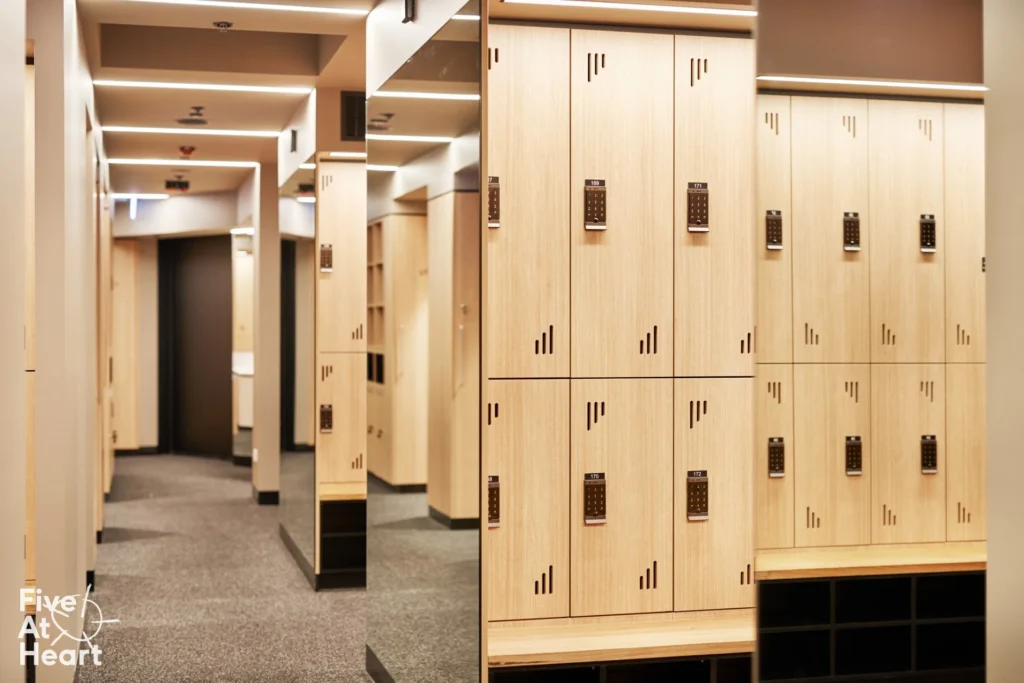
COVID-19’s impact on our health and wellbeing
Aside from the obvious impacts that COVID-19 has had on our health (hand sanitiser, anyone?), there have been some positive impacts as well. A study by the University of Sydney has found that 62% of adults thought that being active is more important now than pre-COVID-19. This is backed up by data from the Australian Institute of Health and Welfare’s report on the direct and indirect health effects of COVID-19 , which says that around 20 per cent of Australians have increased their physical activity during the pandemic.
With increased focus on our health and wellbeing, many people are looking for ways to increase their fitness and continue with healthier habits they may have developed during lockdown.
Ride to work or work from home?
One of the most positive things to come out of the horrific impacts of COVID-19 across the world, is that it has encouraged most workplaces to embrace more flexible working conditions. In fact, Tech analyst Gartner has found nearly a quarter of companies plan to shift at least 20% of their on-site employees to permanent remote positions as a direct result of COVID-19.
This has been a welcome relief for many people around the world, particularly working parents who may have struggled with previously rigid working hours. But with less people coming into the office every day, has the demand for end of trip facilities in office buildings reduced?
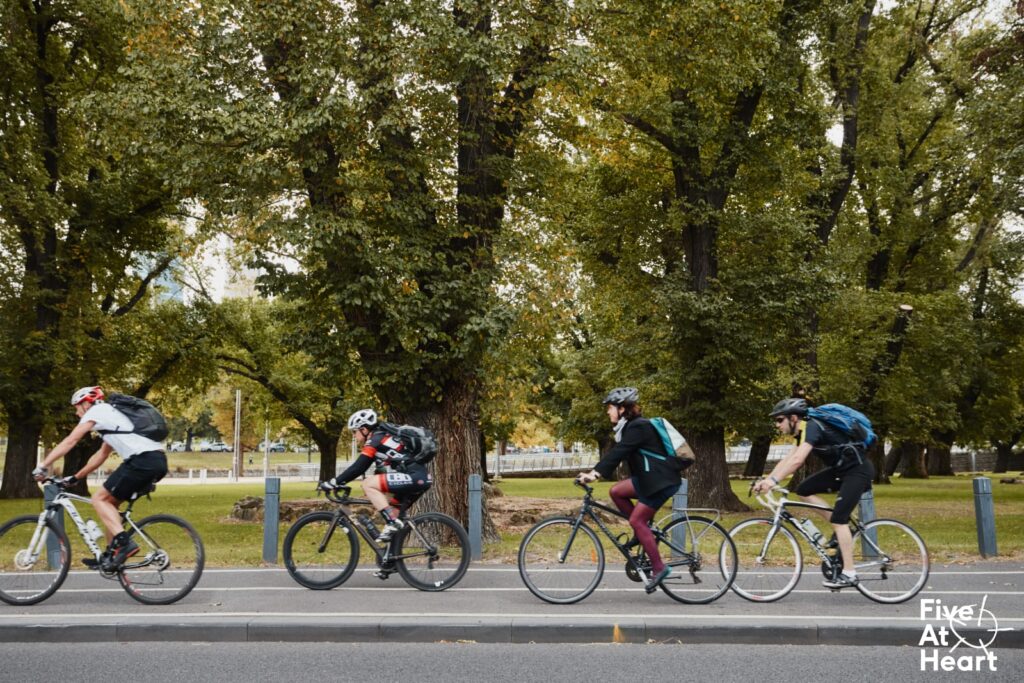
Public VS private transport
Public transport use has decreased substantially, thanks to the impact of COVID-19. This can partly be attributed to factors mentioned already with more and more people working from home, but can also be attributed to people’s hesitancy to bing enclosed with large groups of other people, something that we have now learned to be wary of.
According to data released by the Australian Bureau of Statistics, the amount of people using public transport has nearly halved in a year, with 14% of those surveys using public transport in March 2021, compared with 23% who reported regular use before COVID-19 restrictions began in March 2020.
Additionally, in Melbourne specifically, the Monash Public Transport Research Group surveyed 2000 people from outer, middle and inner suburbs about how they travelled to work before and after COVID-19, with the survey finding that public transport usage will drop by 20%, with bike commuting being predicted to increase by 55% on pre-COVID-19 levels. This shows that while there may be less people in offices across Australia, the demand for end of trip facilities is only going to increase in a post-COVID-19 world.
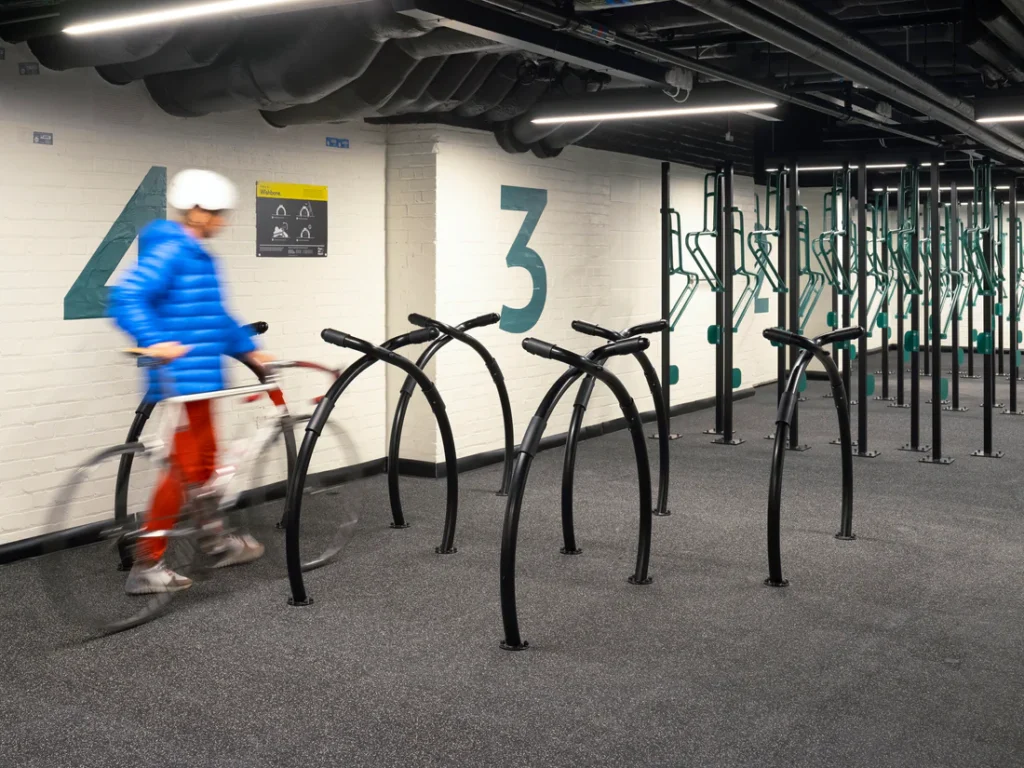
How to benefit from an increasing demand for end of trip facilities
End of trip facilities have become an in-demand feature in residential buildings, offices and workplaces around Australia, and their popularity shows no sign of stopping post COVID-19.
If you are interested in improving your building of office facilities with well-designed end of trip facilities, then your first step should be speaking to the experienced team at Five at Heart .
For nearly 15 years, Five At Heart has been transforming businesses and workplaces around the world by designing, manufacturing, and installing cutting-edge end of trip facilities, change room amenities, bike parking, and office spaces.
You can g et in touch with the Five at Heart team here or give us a call on 1300 769 332 to get started on your way to improving your business facilities.
< Return to Blog
In Ukraine, the moment to stop Putin is now
Ukraine's President Volodymyr Zelensky holds a press conference in Kyiv, Ukraine on Aug. 27. Valentyn Ogirenko/Reuters
Russia carried out one of its single biggest air assaults on Ukraine on Monday, sending more than 200 missiles and drones to damage and destroy the country’s energy infrastructure. Among the targets struck was a hydroelectric dam near Kyiv, raising fears of deadly flooding should the dam fail. Ukraine officials said at least eight civilians were killed, and 20 people injured. At least one missile hit an apartment building, they said.
It was a typically callous attack by Russia, one of countless such outrages since President Vladimir Putin launched his illegal and unprovoked invasion of Ukraine two-and-a-half years ago.
It punctuated the absurdity of a war that will only be resolved through diplomatic negotiation, and the compromises that such talks would involve, involving a dictator who bargains only in bad faith.
Two weeks ago, after Ukraine launched an unexpected strike onto Russian soil in the Kursk region – the first foreign incursion into the country since the Second World War – Mr. Putin ruled out the possibility of peace talks.
“What kind of negotiations can we talk about with people who indiscriminately attack the civilian population and civilian infrastructure, or try to create threats to nuclear power facilities,” Mr. Putin said. “What can we even talk about with them?”
Mr. Putin’s forces have murdered, tortured and raped civilians. They have kidnapped Ukrainian children. They have targetted apartment buildings and schools, and used 1,300-pound bombs to raze entire towns. They attacked and held hostage a nuclear power station at the start of the war.
And now the Russian President says that his delicate sensibilities have been so offended by Ukraine’s counterattack that he can’t even contemplate discussing an end to the war. It’s enough to make you tear your hair out.
But before you do, it’s worth remembering that diplomacy is always done away from the glare of public posturing, and that Mr. Putin has long been looking for a way out of a war that is not going as he planned.
That is why it is now more important than ever that Ukraine’s allies maintain, and even increase, their financial and military support for the beleaguered country. The next few months could be a critical period in the war.
Russia and Ukraine actually began holding peace talks within weeks after Mr. Putin’s troops poured across the border in February, 2022. Those talks failed after Mr. Putin discovered that neither Ukraine nor the West would allow him to invade a sovereign country with impunity – and that the terms he was demanding wouldn’t be so easy to get.
The United States, Britain, France, Germany, Canada and other allies have sent billions of dollars in aid and weapons to Ukraine, and have imposed financial, travel and technological sanctions on Russian officials and businesses.
The sanctions haven’t brought Russia to its knees, but they are hurting. Removing the sanctions the West had imposed after Russia’s illegal annexation of Crimea in 2014 was one of the very first things Mr. Putin demanded in the 2022 peace talks, and they’ve only gotten worse.
As well, Russian casualties are mounting. Estimates vary, but the number of Russian soldiers killed may have surpassed 100,000 this year, according to some sources . Russia has also lost some of the Ukrainian territory it took in 2022. And now it has Ukrainian troops on its own soil.
At the moment, the two sides are in something of a stalemate. Each is working to gain an advantage at the negotiation table: Russia by focusing its resources on the bloody village-by-village ground battle in the eastern provinces; Ukraine by invading the Kursk region and bombarding Russian war infrastructure across the border.
If Russia prevails, it would be in a position to force Ukraine to give up some of its eastern territory, recognize Crimea as Russian land and limit the size of its military in the future in exchange for an end to the war, among other concessions.
Such a capitulation should be unacceptable to Ukraine’s allies. But the clock is ticking. A victory by Donald Trump in the U.S. election in November could choke off critical American aid to Ukraine. Now is the moment for Ukraine’s allies to give it the money and arms it needs to keep making Mr. Putin pay for his aggression, and to get his diplomats to the negotiating table on terms that are favourable to everyone’s interests but his own.
Report an editorial error
Report a technical issue
Editorial code of conduct
Follow related authors and topics
- International Relations and Global Issues
- Russia-Ukraine war
- Vladimir Putin
Authors and topics you follow will be added to your personal news feed in Following .
Interact with The Globe
Breaks in main water pipeline for Grand Canyon prompt shutdown of overnight hotel stays
All park concessions will halt overnight accommodations including at el tovar, bright angel lodge, maswik lodge and phantom ranch, by the associated press • published august 28, 2024 • updated on august 29, 2024 at 5:18 am.
The main pipeline providing water to the Grand Canyon National Park has failed after a series of breaks, leading to a sudden and sweeping shutdown of overnight hotel stays during one of the busiest times of the year for the famous tourist destination .
Water restrictions will run throughout the Labor Day holiday when hotels are near or at capacity. It’s an unprecedented outcome, even for a pipeline with a long history of frequent failures.
Streaming 24/7: Watch NBC 5 local news and weather for free wherever you are
Since July 8, the park has faced challenges with its water supply, and no water is currently being pumped to either the canyon’s south or north rims, officials said.
Heidi Zahner Younts, of Iowa City, Iowa, said Wednesday in a comment on the park's Facebook page that she had “the trip of a lifetime” with her daughter planned for the weekend, calling the situation sad.
Get top local stories in DFW delivered to you every morning. Sign up for NBC DFW's News Headlines newsletter.
By Wednesday evening, however, she told The Associated Press via Facebook message that she was able to book a different hotel outside the park. She said she hoped the water restrictions would mean "less traffic and people.”

Authorities recover body of Arizona woman who went missing in Grand Canyon after flash flood

Texas hiker dies after collapsing in Grand Canyon National Park
The 12.5 mile-long (20 kilometer-long) Transcanyon Waterline, originally built in the 1960s, supplies potable water for facilities on the South Rim and inner canyon. Park officials say it has exceeded its expected lifespan.
Since 2010, there have been more than 85 major breaks that disrupted water delivery, but none that have forced what park officials call “Stage 4” water restrictions. That is, until four recent significant breaks.
Under these water restrictions, visitors won't be able to stay overnight starting Thursday, including at El Tovar, Bright Angel Lodge, Maswik Lodge and Phantom Ranch. The impacts weren't immediately obvious on Wednesday night, as some hotel restaurants continued serving food and cars filled parking lots at the South Rim.
Hotels located outside the park in the town of Tusayan, Arizona, will not be impacted, and the park will remain open during the day.
Carved by the Colorado River and known for its vast desert landscapes, the Grand Canyon welcomed nearly 523,000 visitors last August and more than 466,000 visitors last September.
Josh Coddington, communications director at the Arizona Office of Tourism, said he expects an uptick in calls from people wanting to know if they can visit the Grand Canyon.
“The Grand Canyon is known not only throughout the U.S., but throughout the world, and people love visiting it,” he said.
While the park isn’t entirely closed, any perception that it is could negatively impact the cities and towns where tourists sleep, shop and dine on their way to the canyon, including Flagstaff, Williams and Tusayan on the south side and Cameron on the east side.
Park officials hope to restore full operational status for overnight guests on the South Rim as quickly as possible.
Complicating restoration efforts, however, is that the breaks occurred in a narrow part of the canyon known as “the box," an area susceptible to rock fall and with high temperatures this time of the year. A photo of one of the recent breaks released by park officials shows a funnel of water spewing from the pipe and across the slim canyon.
“It's definitely a challenging place to be and have a pipeline break on you," Baird said, noting safety concerns for the crews tasked with repairing the damage.
The pipeline failure comes amid a $208 million rehabilitation project of the waterline by the National Park Service that began recently. Upgrades to the associated water delivery system are expected to be completed in 2027.
The park says it wants to meet water supply needs for 6 million annual visitors and its 2,500 year-round residents.
This article tagged under:

IMAGES
VIDEO
COMMENTS
End of trip facilities are increasing in popularity and have become a beneficial utility to a lot of companies, helping them to promote good health and fitness habits, and improve the day-to-day functions and productivity of a workplace. A recent study by Monash University has shown that investing in end of trip facilities can encourage staff ...
End-of-trip facilities, also commonly referred to as EOTF, are designated amenities provided at the end of a journey, typically in the context of centralised locations such as offices, commercial buildings, public transport hubs and other public areas. These facilities are designed to provide people who cycle, jog or walk with convenient ...
End-of-trip facilities encompass the cycle parking, changing areas, showers, and all 'journey end' facilities in a building that are most commonly used by active commuters. Since the COVID-19 pandemic, the office has seen a seismic shift in occupancy rates, and in turn, its core function changing as a building and workspace. ...
End-of-trip facilities are dedicated active travel facilities. They are services dedicated to those cycling, walking, or jogging to a destination, as opposed to driving a car or taking public transport. This, at least, is the simplest definition. The reality is that End-of-Trip facilities need to be well thought-out and designed to have the ...
If you want some more inspiration and ideas for end of trip facilities for your commercial building, visit the inspiration gallery here, or to start the process to improve your commercial building by investing in end of trip facilities, get in touch with the Five at Heart team here or give us a call on 1300 769 332. < Return to Blog.
End of Trip Facilities - the new normal. Once considered a luxury, End of trip (EOT) facilities have become an expected feature for commercial buildings. In addition to providing secure bicycle parking systems, EOT facilities include showers, changing amenities and clothing lockers. For new buildings, EOT facilities are a standard part of the ...
End of trip facilities (or EOTs) include changing rooms, showers, lockers and secure bicycle storage areas in a commercial building's common area. They are designed to support people who cycle, walk or run to work or exercise during their lunch break. They're also increasingly used by employees to freshen up after returning from a business ...
Today's End of Trip facilities are a future-proofing strategy for commercial building owners to retain tenants and secure new ones, while helping tenants to remain at the forefront of workplace health and wellness. By encouraging their staff to embrace healthy living, the tenants benefit through lower absenteeism, improved staff retention and ...
The result of a high end, luxury upgrade the new end-of-trip facilities sees world-leading design intended to inspire new levels of fitness, health and wellbeing for the various tenants. The multimillion-dollar end-of-trip facilities design, called ONE, features a resort-style spa and wellness experience - designed to emulate the amenities of ...
This shows that end-of-trip facilities that support employees' health and wellbeing are increasingly important for office properties. As well as the benefits of investing in your office tenants health, end of trip facilities offer additional benefit such as: Increased staff wellbeing. Higher productivity. Improved corporate image.
Add to that a growing trend in Australia that sees EOT (end-of-trip) facilities — shared bathroom spaces that encourage and support employees who bike, walk or jog to work in the mornings and those who get physical on their lunch break — popping up in office buildings big and small.
The Importance of End-of-Trip Facilities in Workplaces & Other Properties. Providing commuters with convenient amenities at the start or "end of (their) trip" can provide a huge range of benefits not only for your employees but also for the wider community and our environment. From encouraging healthier, more active lifestyles while reducing ...
End of trip facilities are becoming an important part of modern office design, but CSM know that sustainability must go hand in hand with this development. Co-owned by Mirvac Group, 101 Miller St North Sydney needed an upgrade and like so many office projects today, end of trip facilities were an essential inclusion for the build.
End-of-trip facilities are a mandated requirement for all new major developments and major renovations to major developments in designated Queensland local government areas. A new major development (commercial office building, shopping centre etc.) with a floor area greater than 2000m2 must include end-of-trip facilities that are easily ...
The exercise boom over the last 20 years has seen End of Trip (EOT) facilities become an essential amenity within almost every office tower in the Brisbane CBD. To be exact there is just a mere 19% of Brisbane office towers within the CBD that don't currently have an EOT onsite. So what is an End of Trip Facility?
End-of-trip facilities. End-of-trip facilities are designated places that support people who: cycle, jog or walk to work rather than driving or taking public transport. exercise during their lunch break. End-of-trip facilities include: secure bicycle parking and storage facilities. locker facilities.
End of Trip Facilities in Perth Commercial Building Design & Office Fit Outs. In the fast-paced world of modern business, creating a workspace that caters to the needs of employees has never been more crucial. One key element that has gained significant attention in recent years is the concept of "End of Trip Facilities."
Reinvigorating your end of trip facilities design and offering, provides your tenants with that little taste of luxury every day. By redesigning your end of trip locker spaces, change rooms, and refreshing your office spaces with modern, sustainable finishes, you're creating an office space people want to come to.
The Importance of End-of-Trip Facilities to Tenants and Employees. End-of-Trip facilities began with cycle parking. Coming at the literal end of your trip to work, these areas provided a safe place to store and park your bike. Showers, changing areas, and lockers were quickly added, all with the purpose of catering to the active commuter.
An emerging trend in new buildings and major refurbishments; end-of-trip facilities are typically identified as shower, bathroom and storage facilities for people using non-motorised methods of transport to and from work, such as bicycles. Where once businesses and building owners would be focused on accommodating onsite car parking for their ...
DuraPlan Products. May 21, 2021. End-of-trip facilities have been taking Australian businesses by storm. They've become a beneficial utility to a lot of large companies that can promote good health and fitness habits and improve the day-to-day functions and productivity of a workplace. The design of these spaces is quite simple and flexible.
The lobby features sleek furnishings and sets the tone for a sophisticated stay. Guest registration and concierge services are tucked to the side while visitors are wowed by an impressive and bustling bar area as well as sitting spaces ideal for gathering before you head off to a night out or a trip to one of the many West End shows at your finger tips.
End of Trip Facilities - The New Normal During Covid-19. End of trip facilities are now a standard expectation for offices and workplaces across Australia, and around the world. Over the last ten or so years these facilities have become more and more popular, improving efficient use of space and ease of use for building tenants and occupiers.
Ukraine's allies must give it the money and arms it needs to keep making Putin pay for his aggression, and get his diplomats to the negotiating table on favourable terms
Visitors won't be able to stay overnight in hotels at Grand Canyon National Park over Labor Day after a series of breaks in the main pipeline that serves the popular tourist destination.